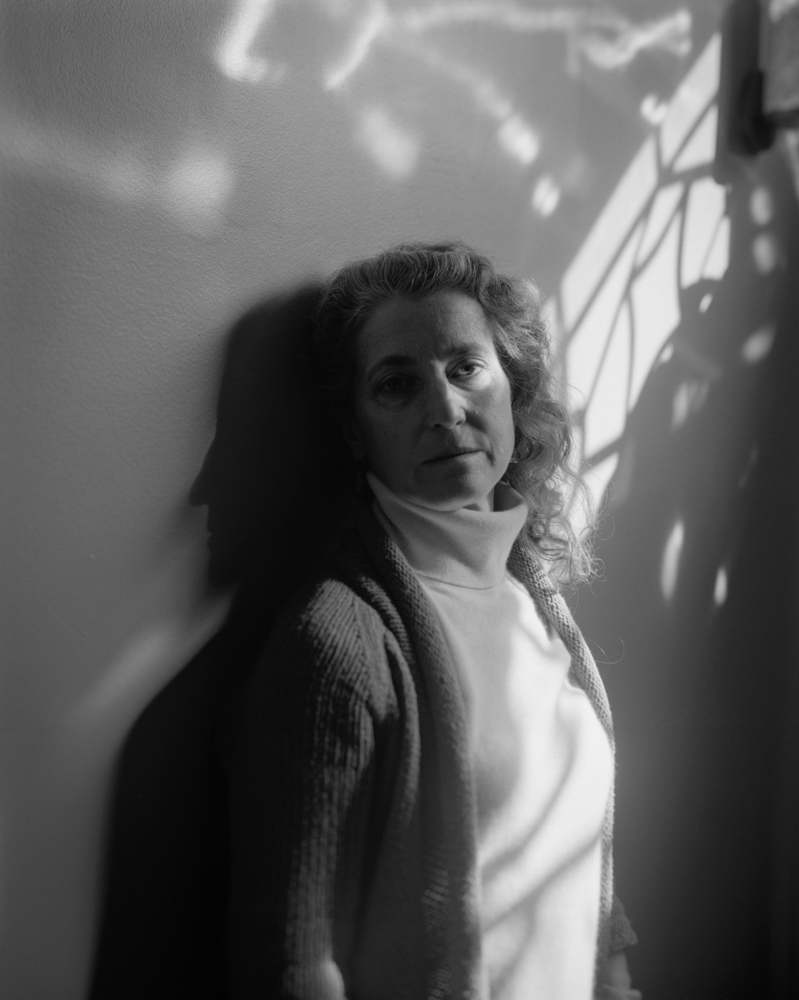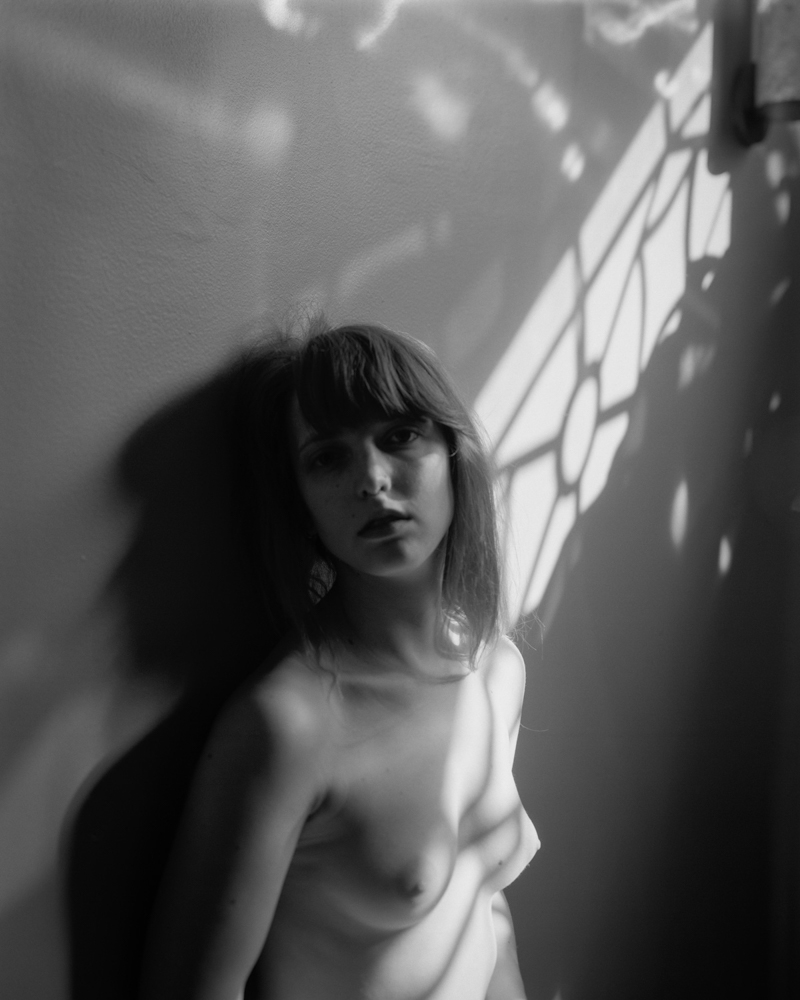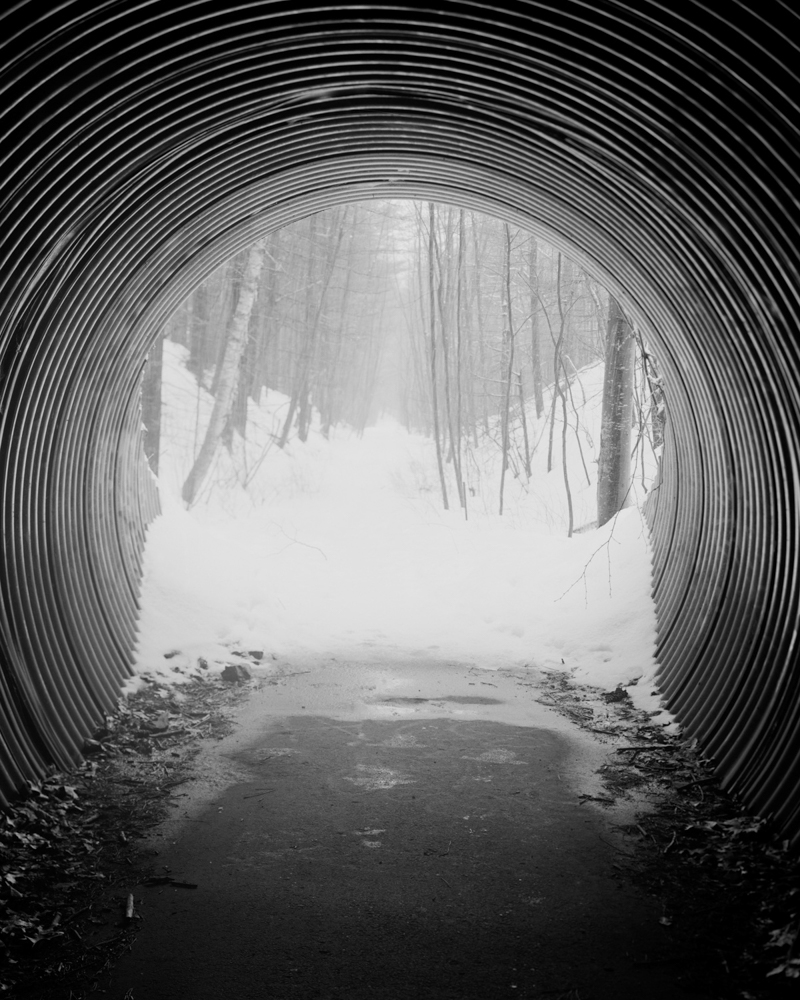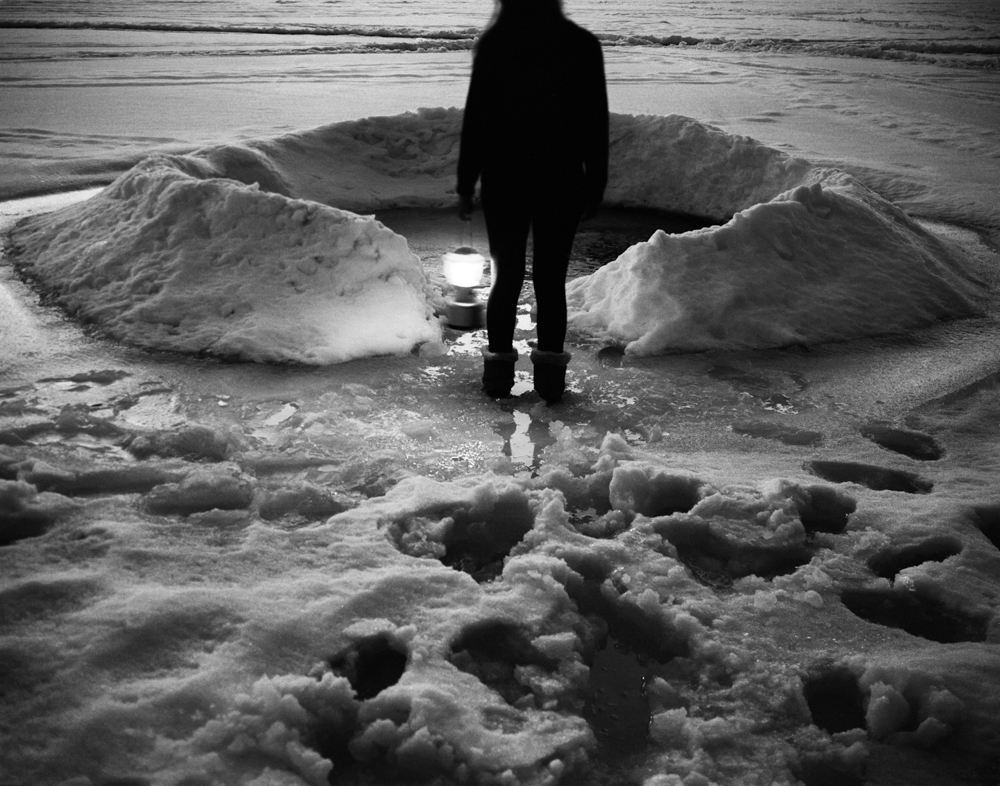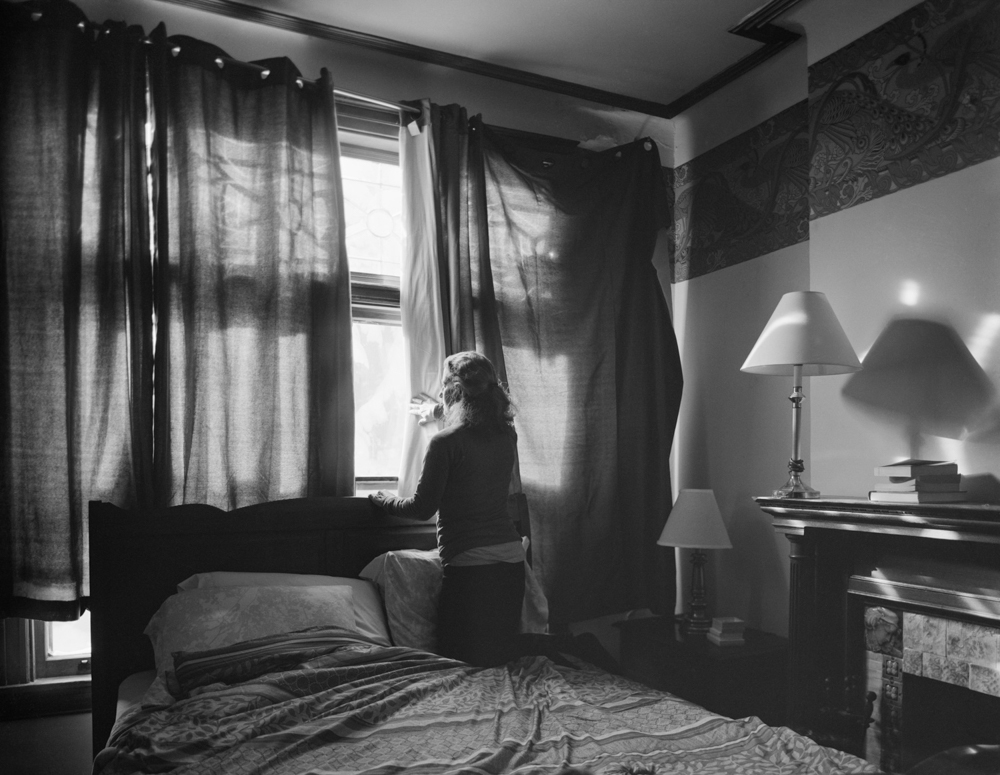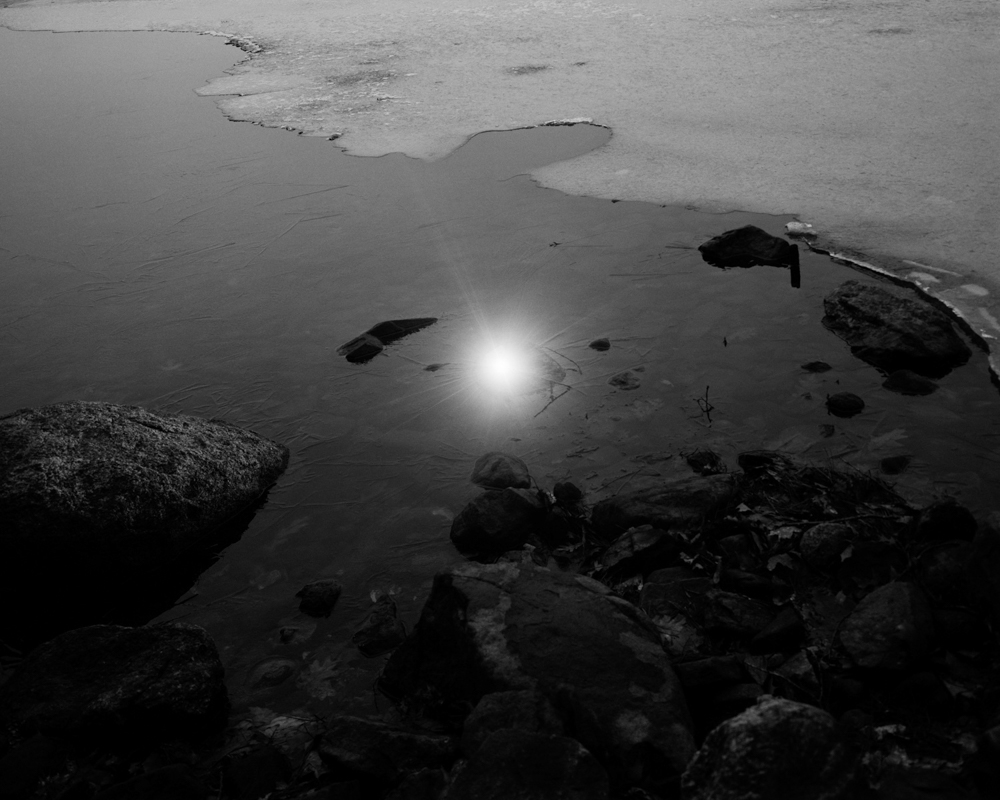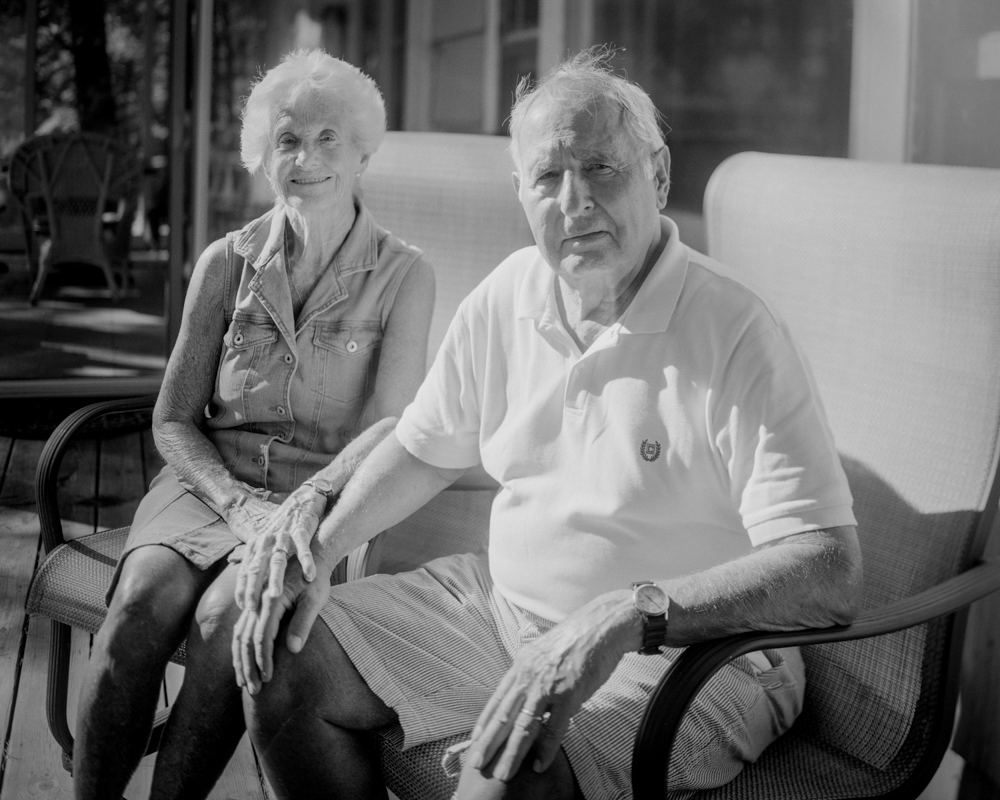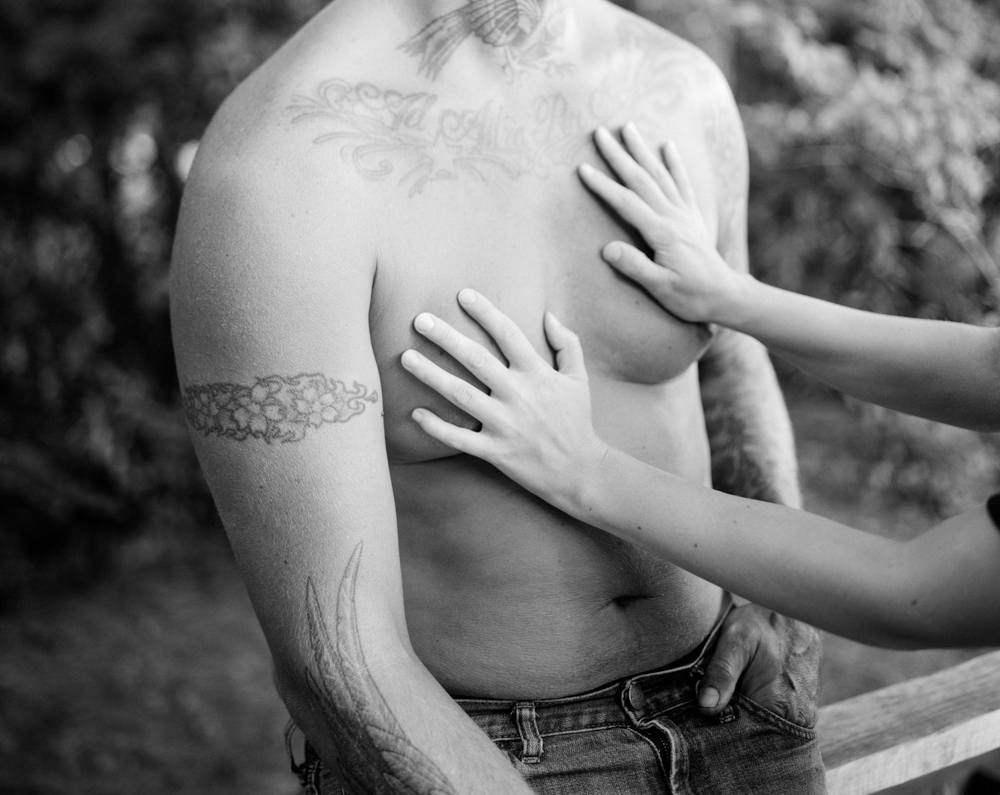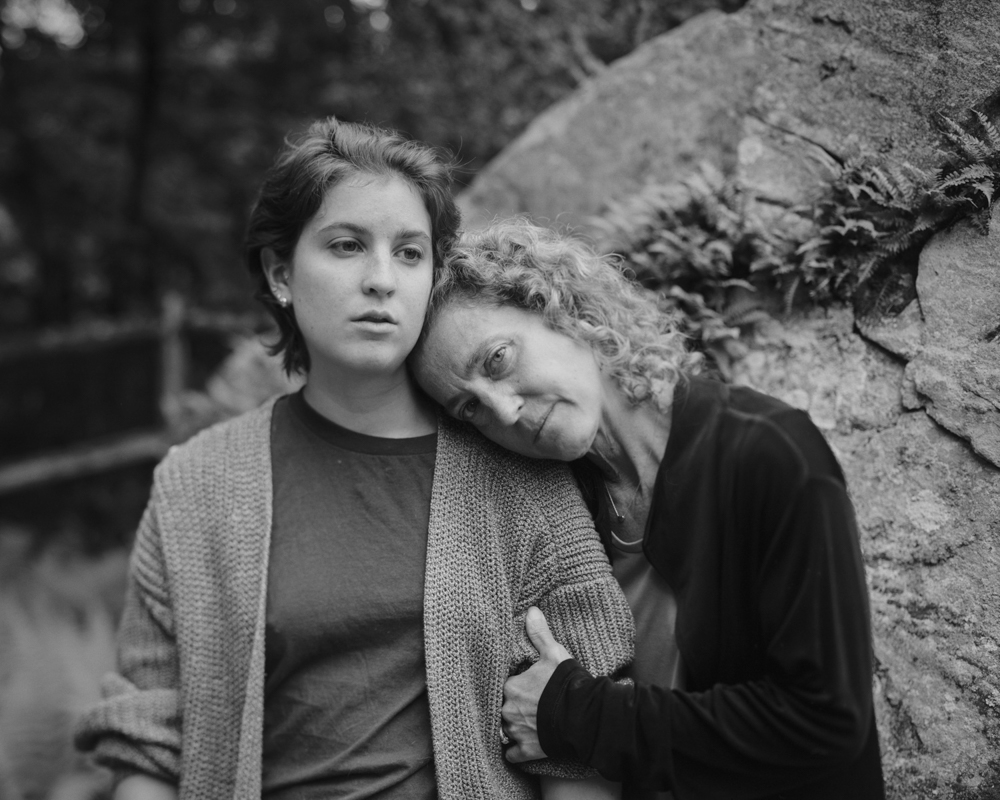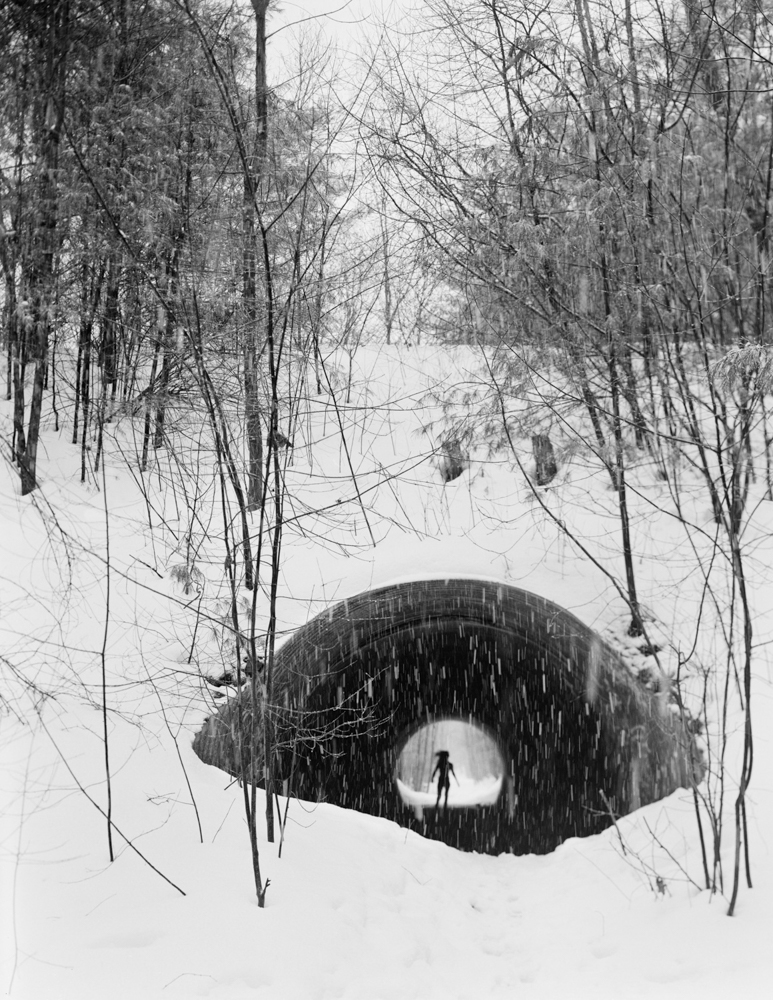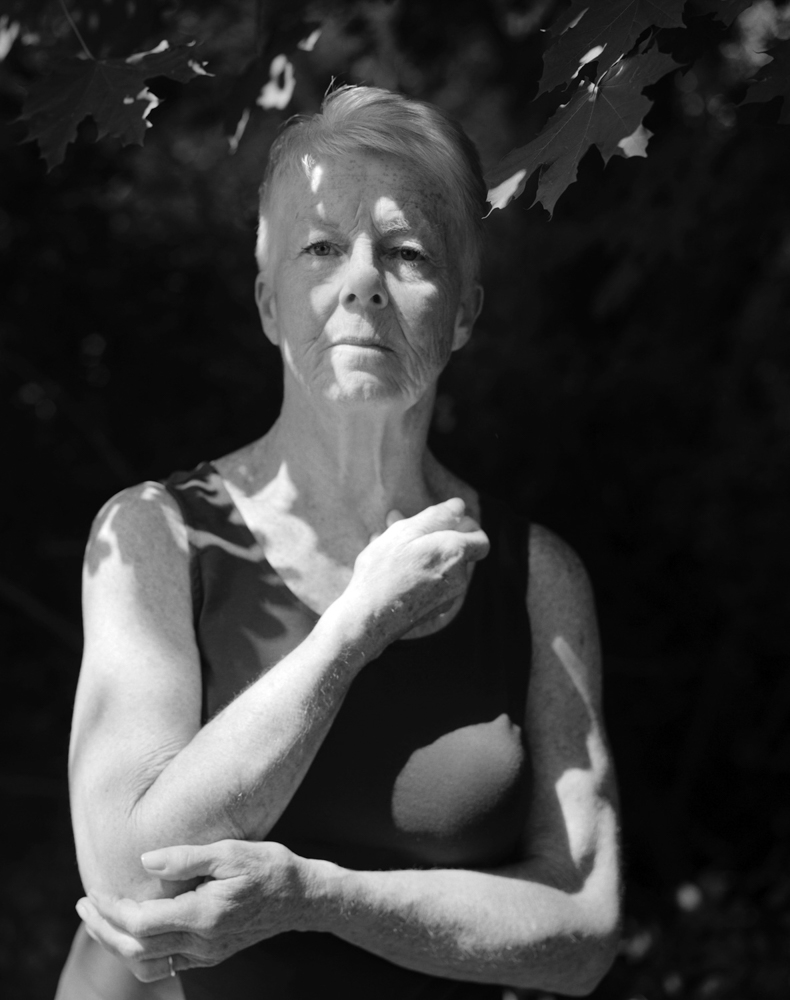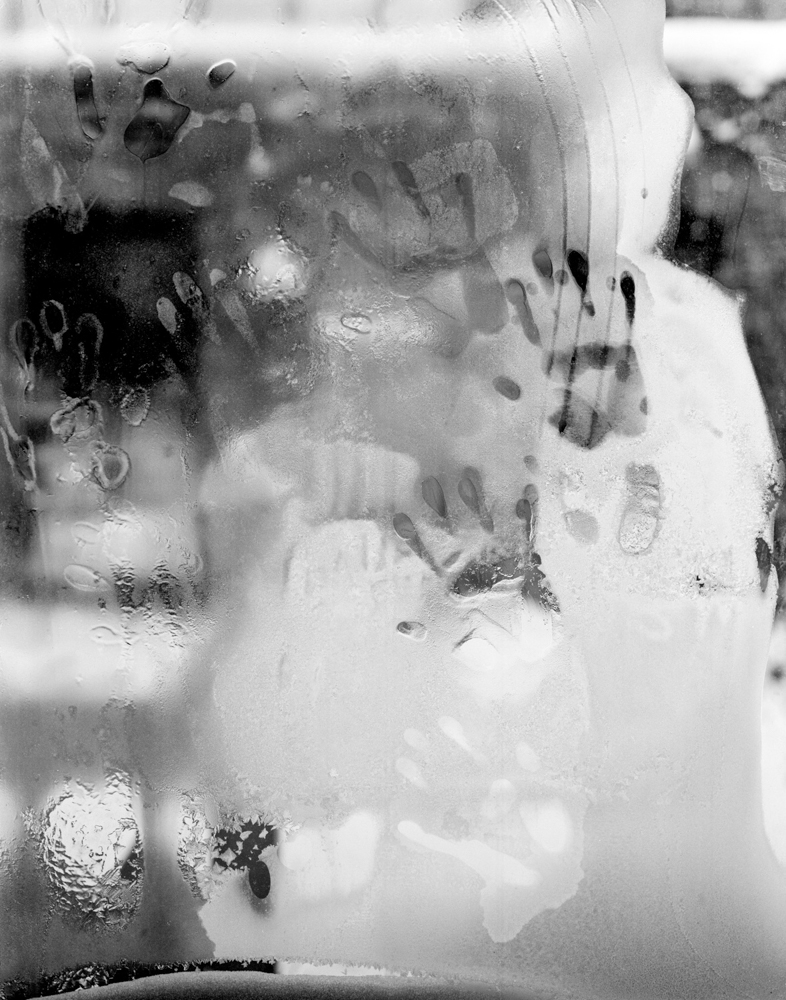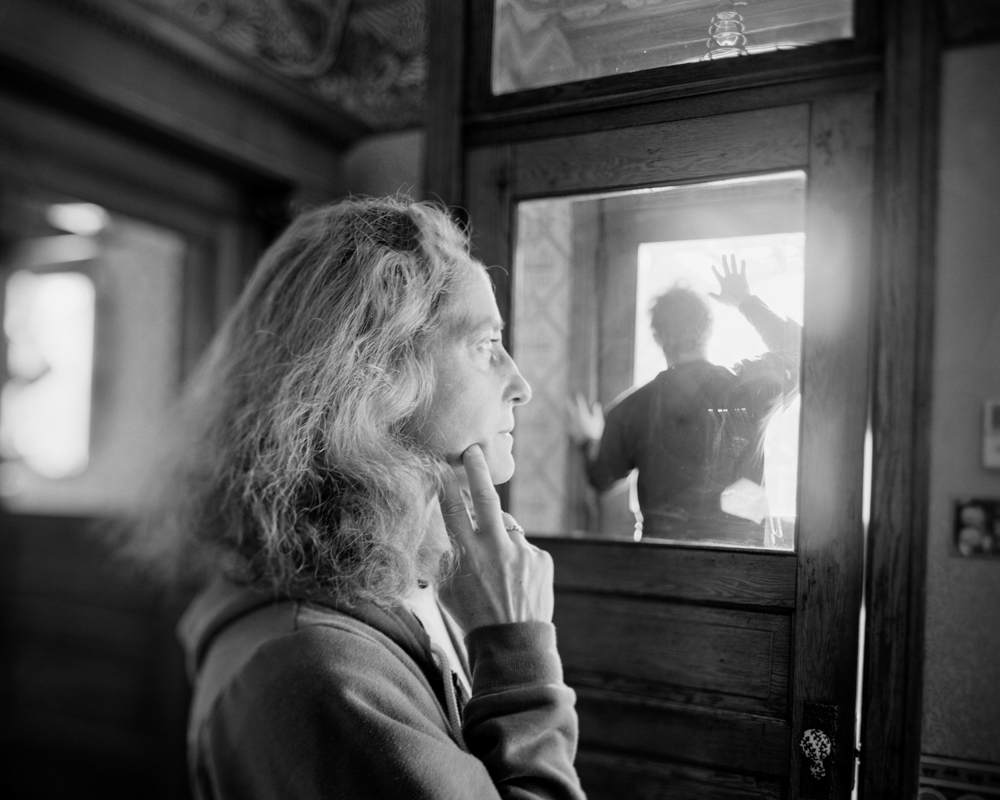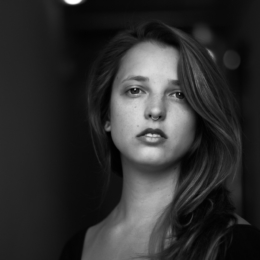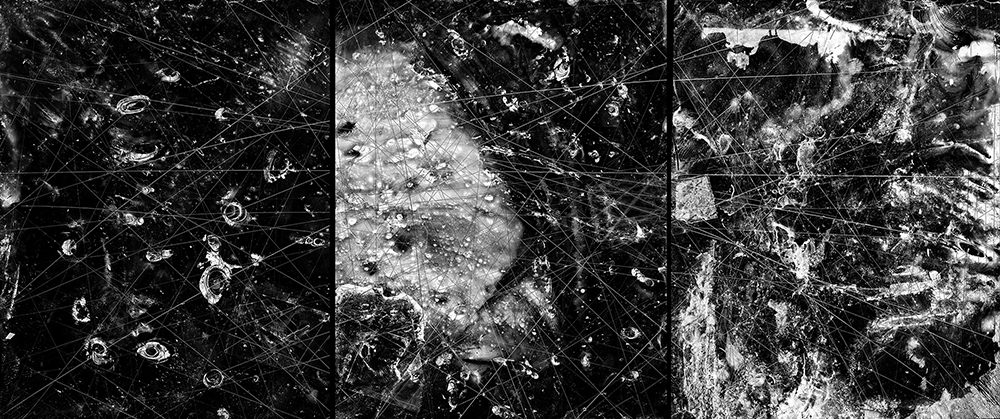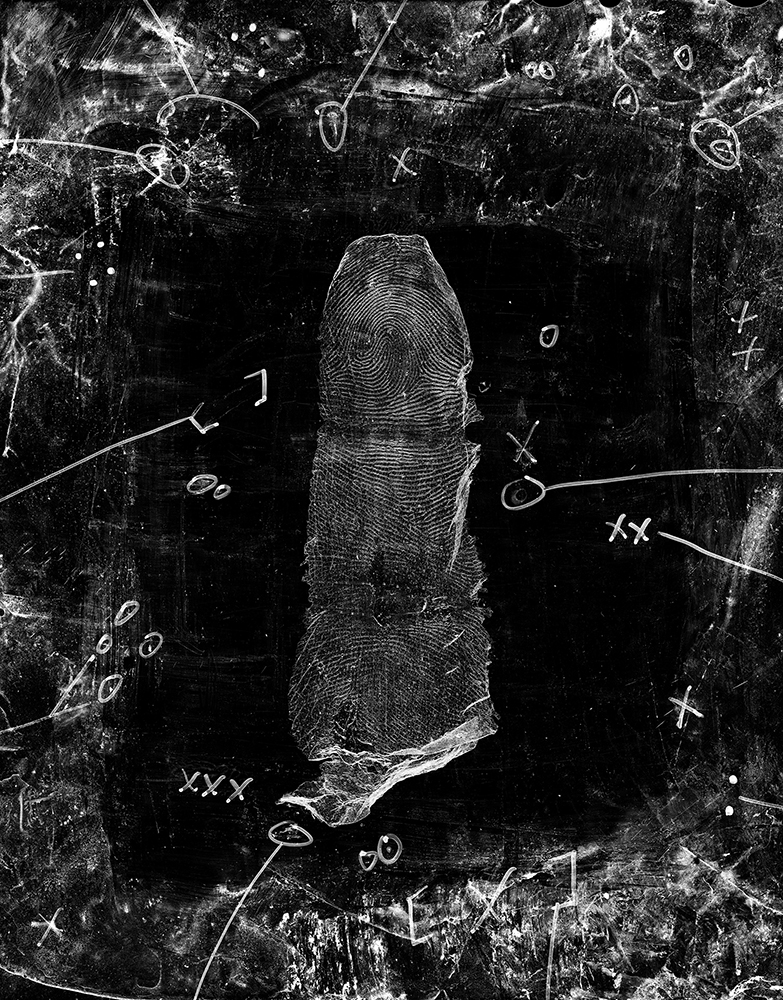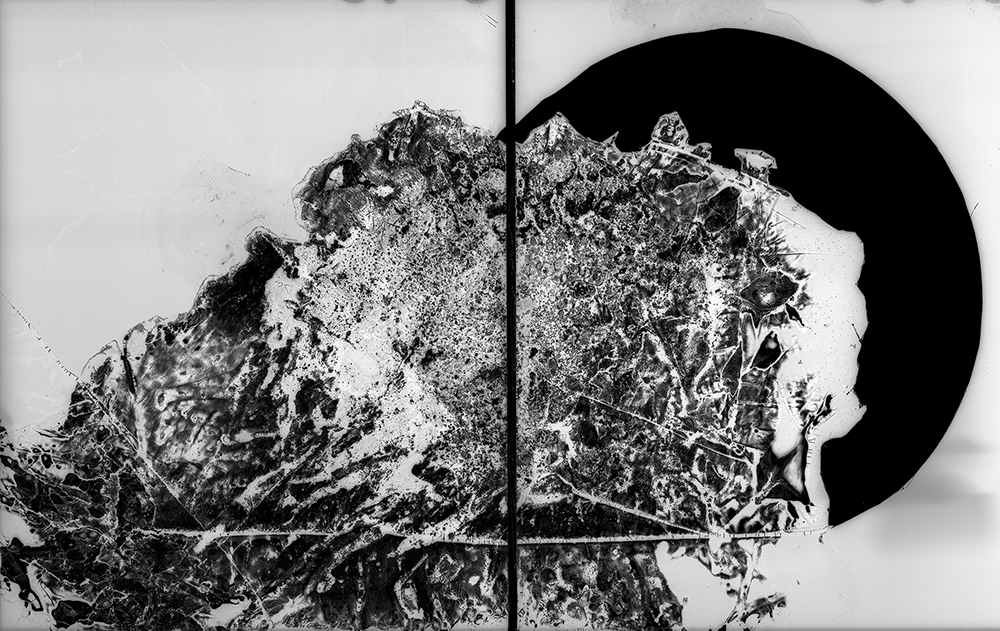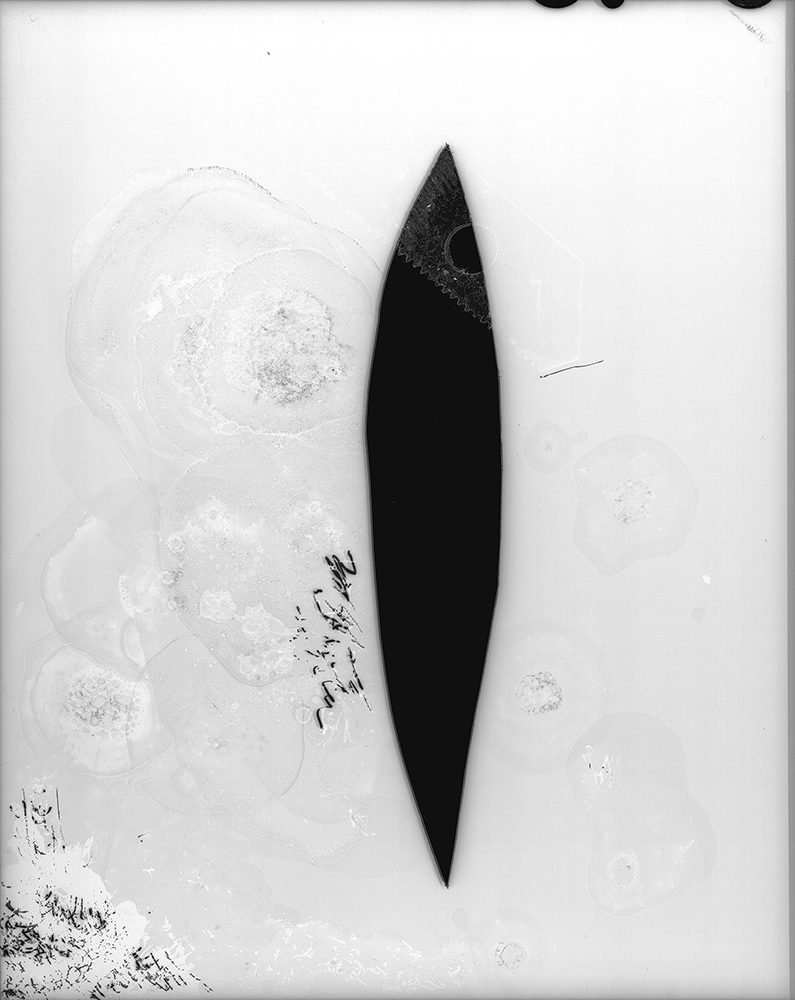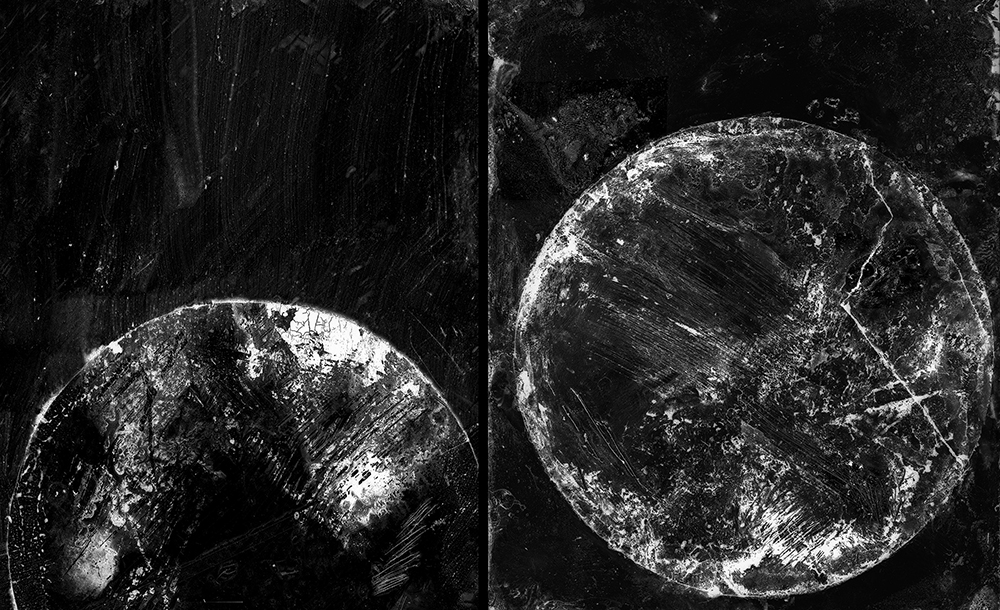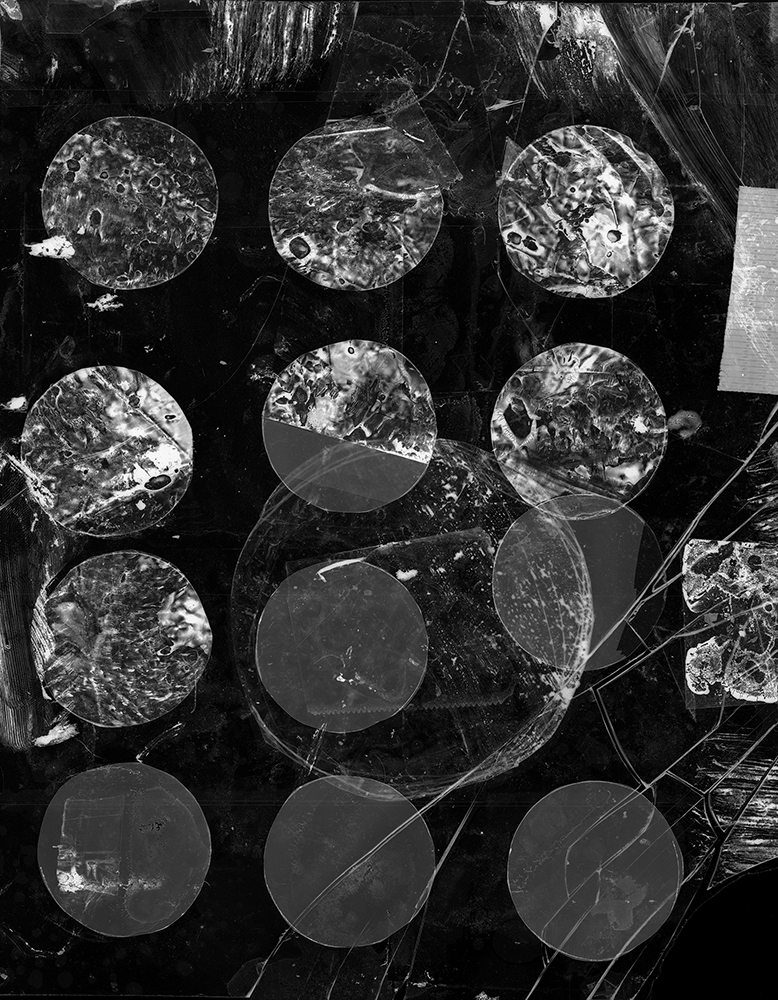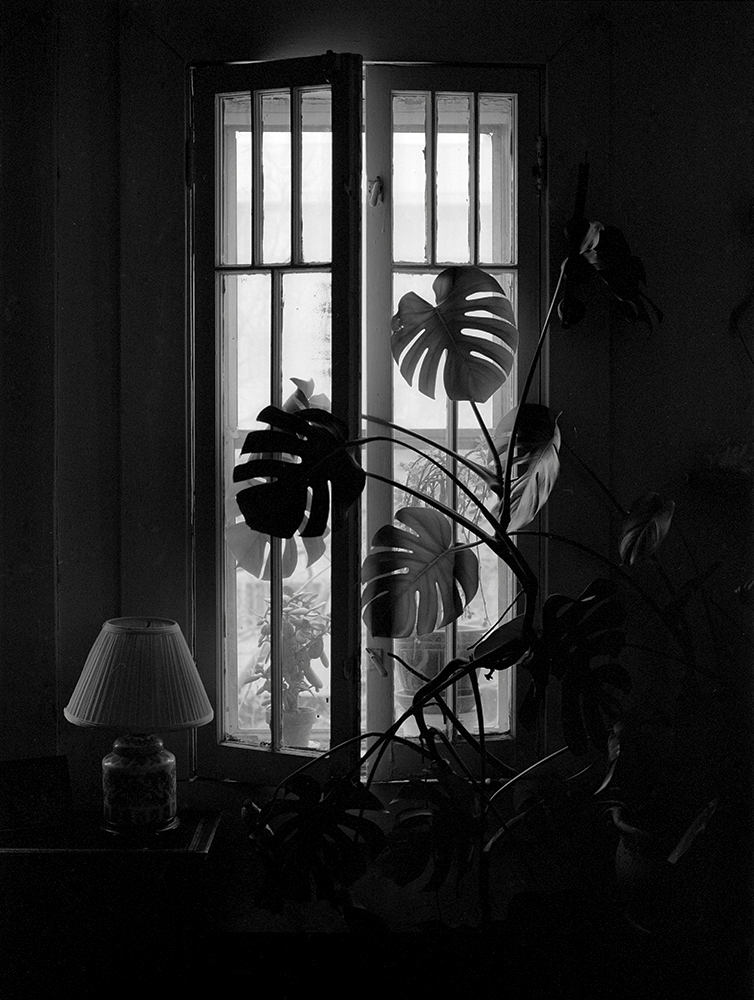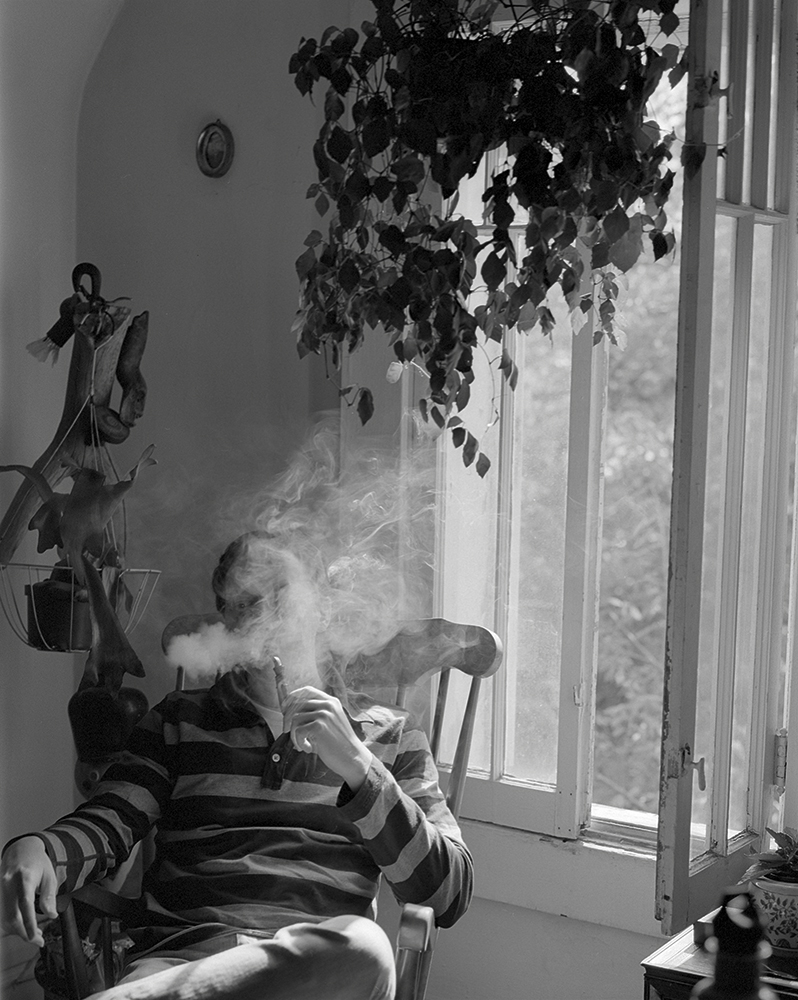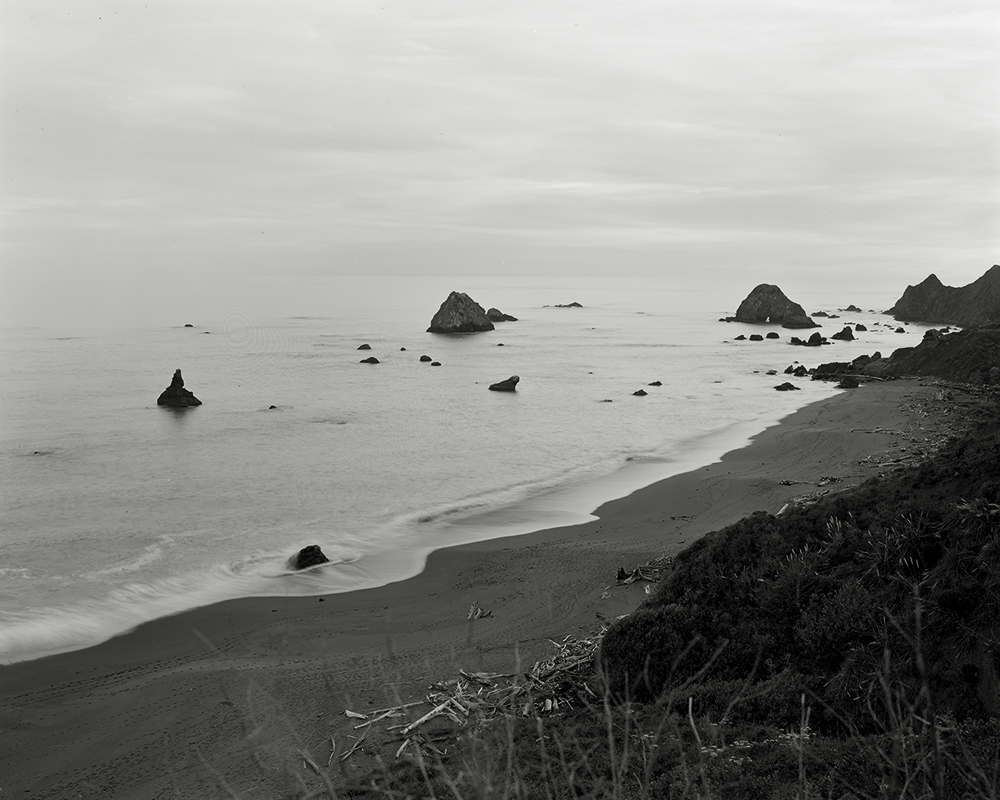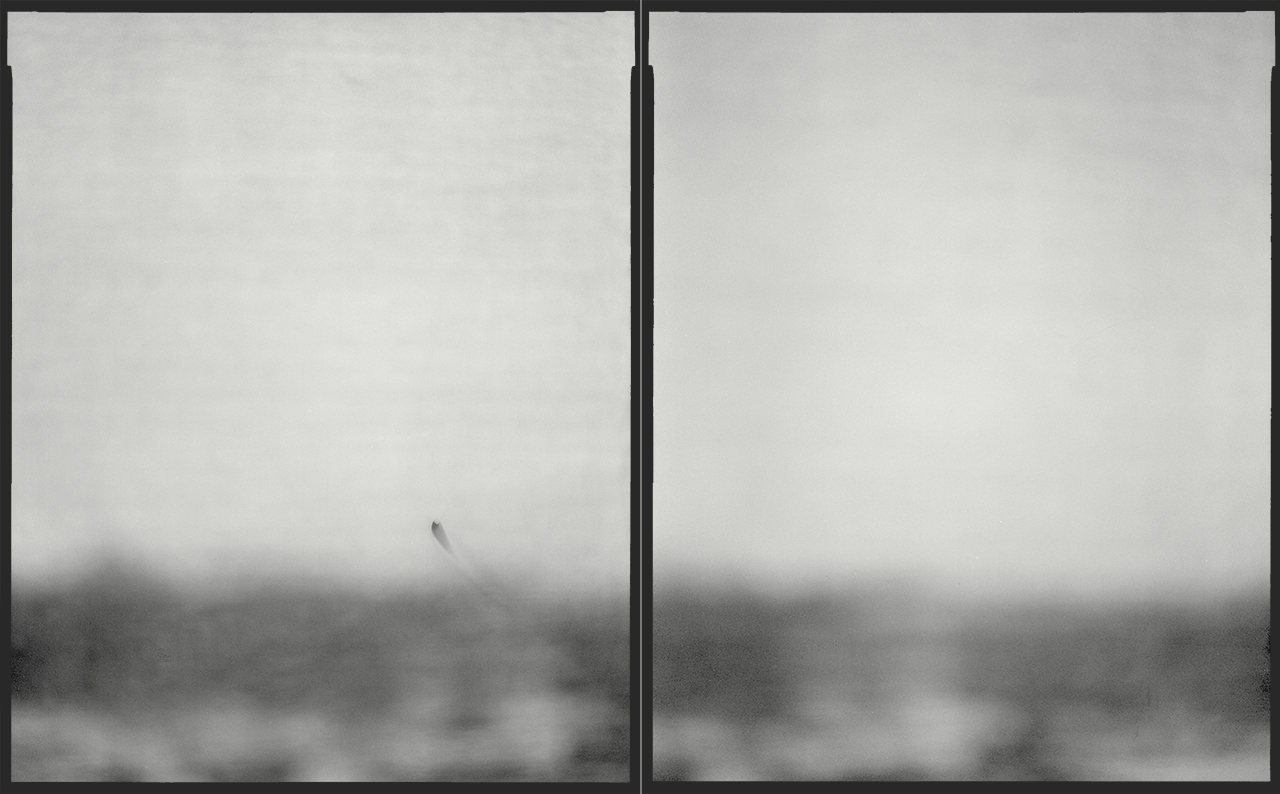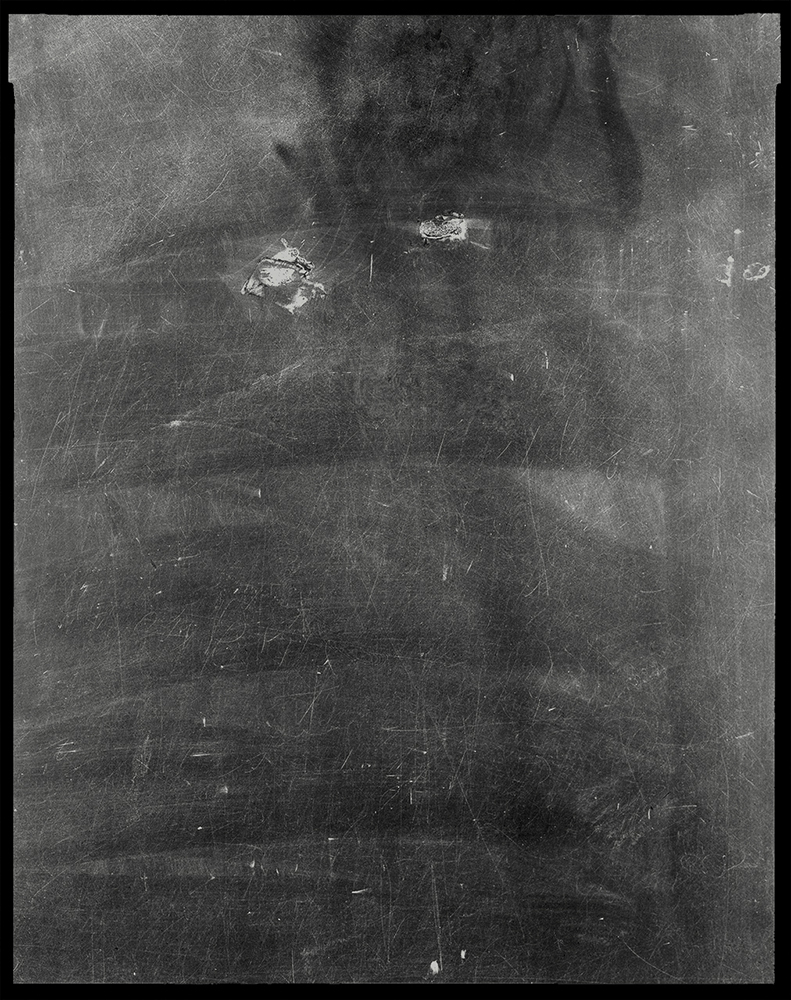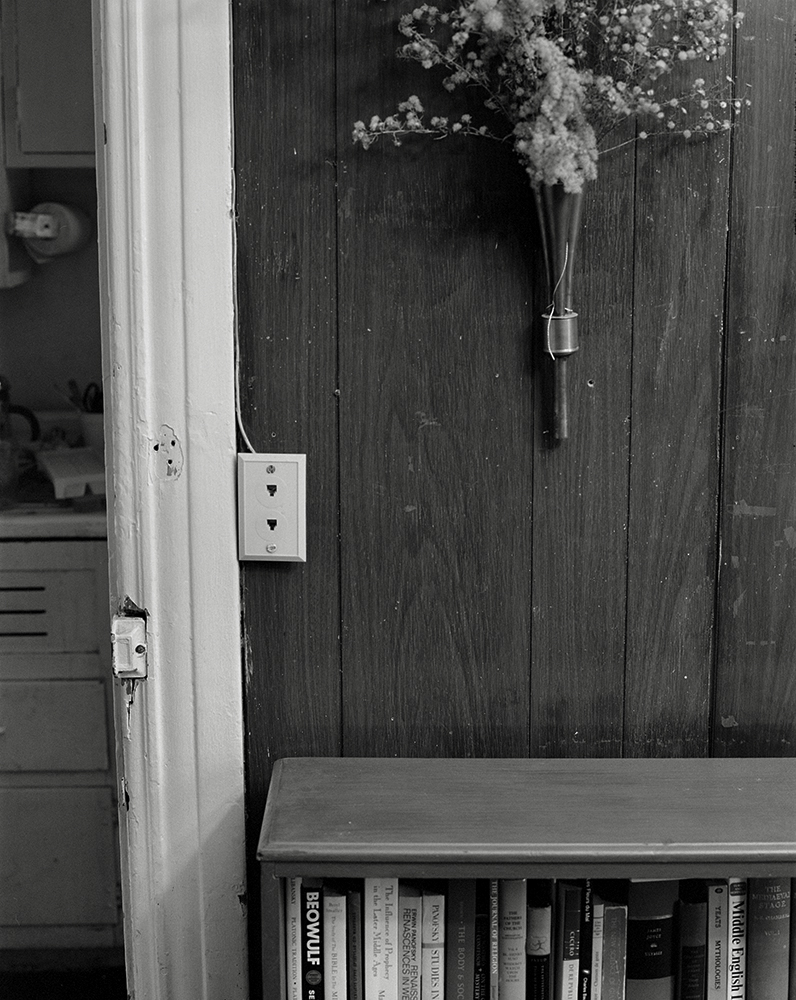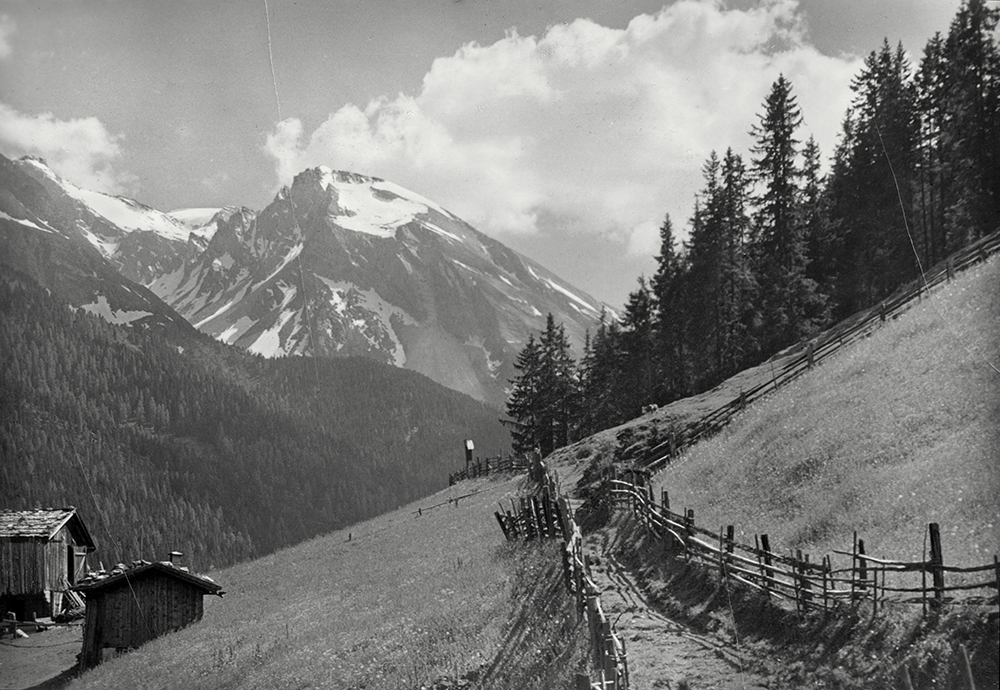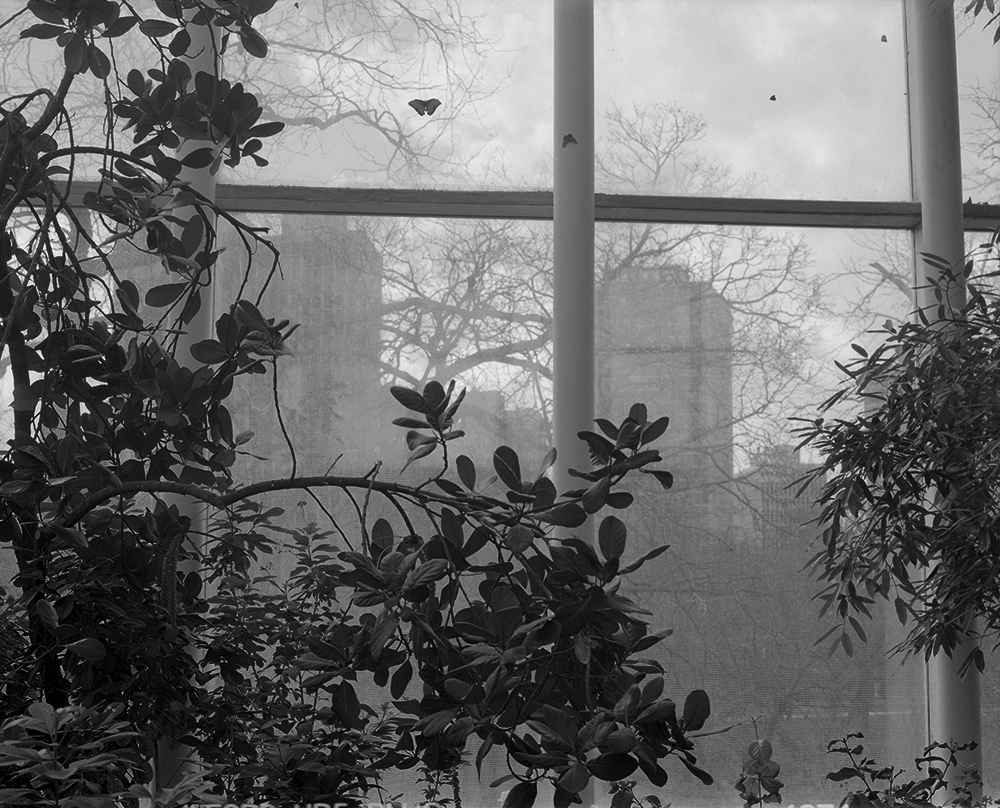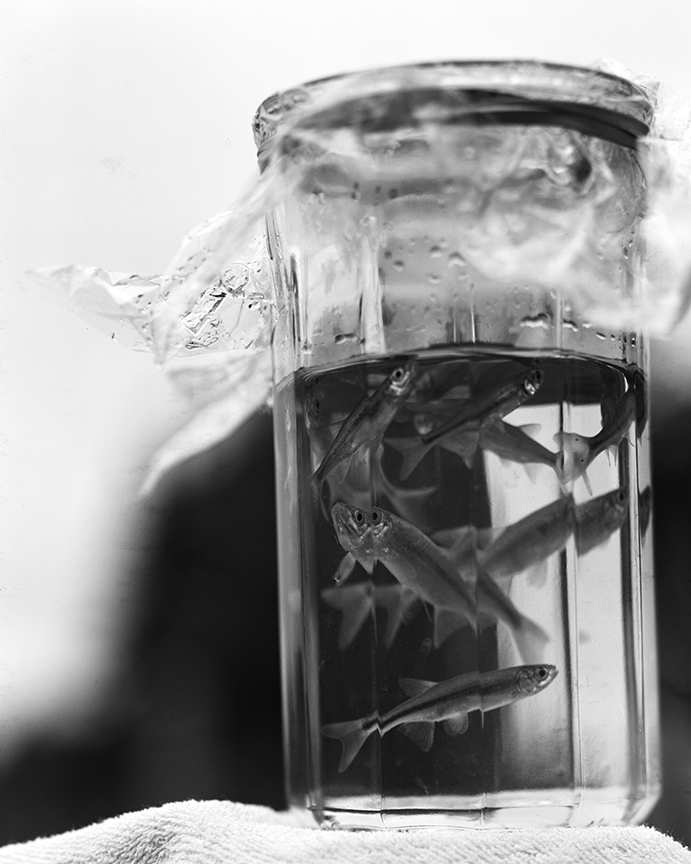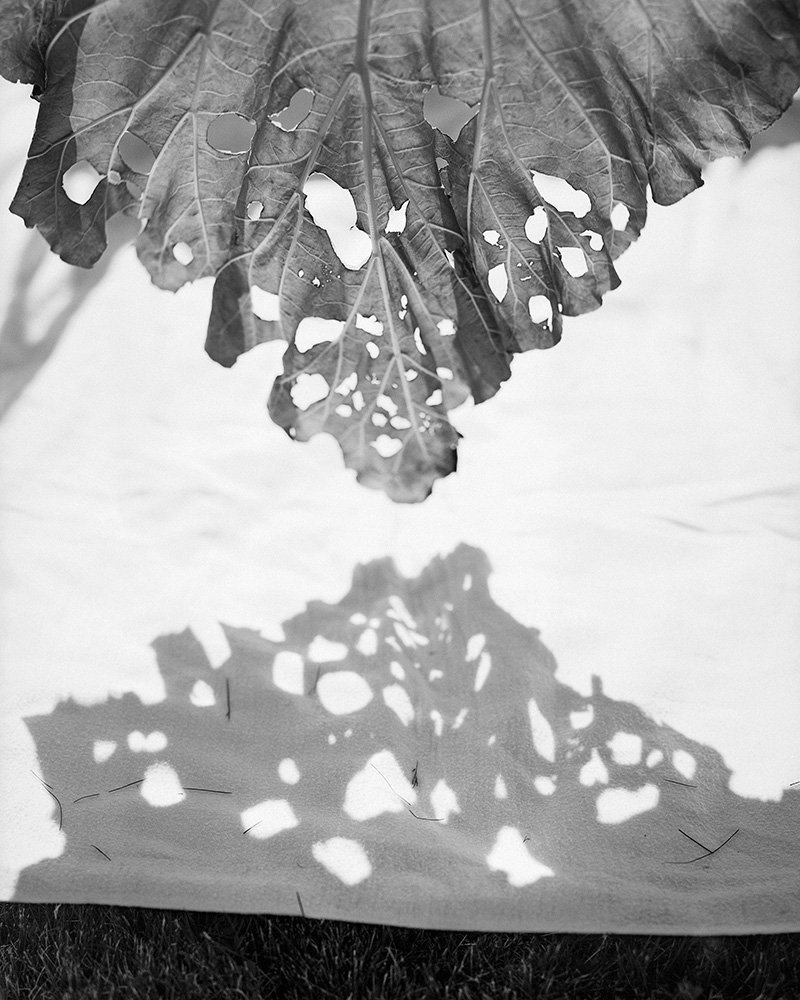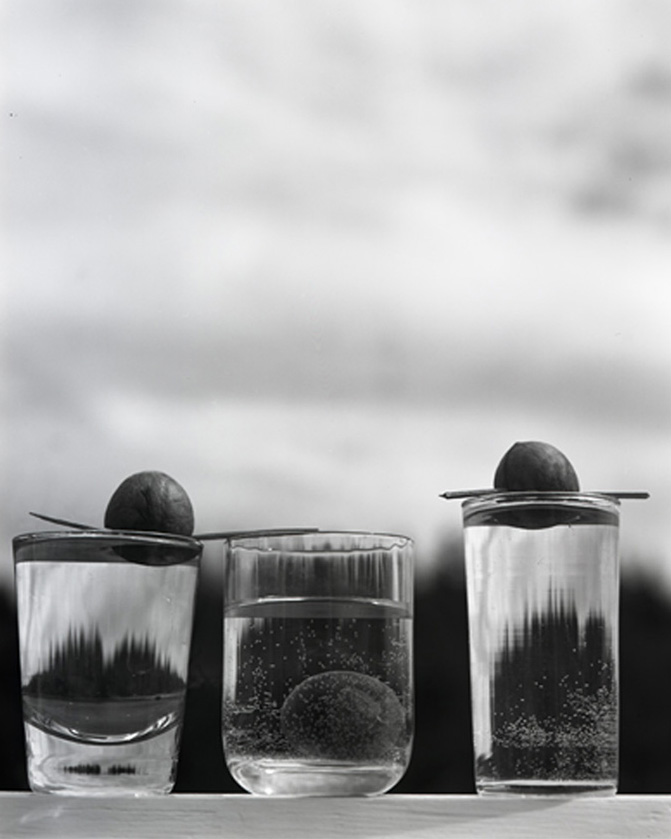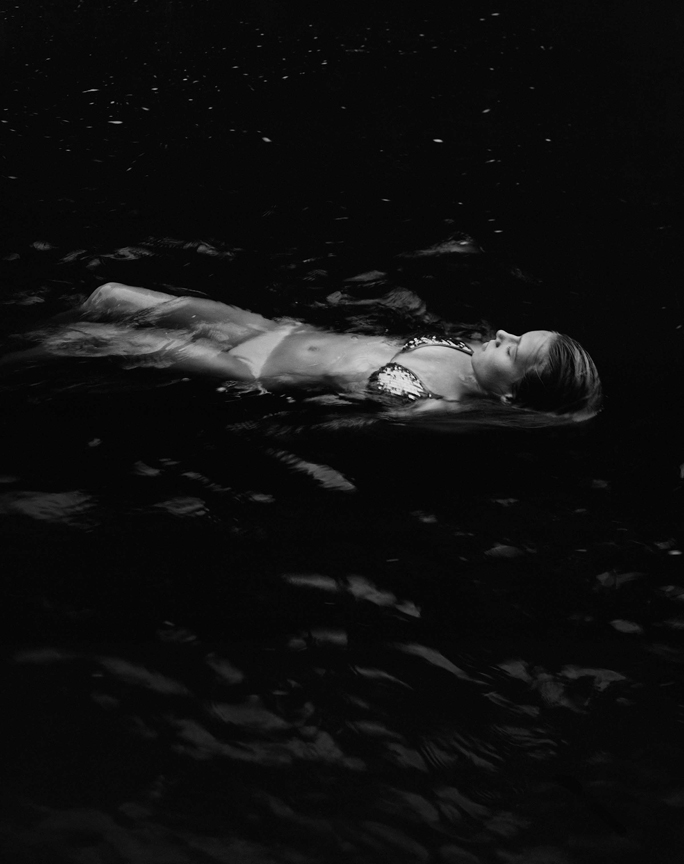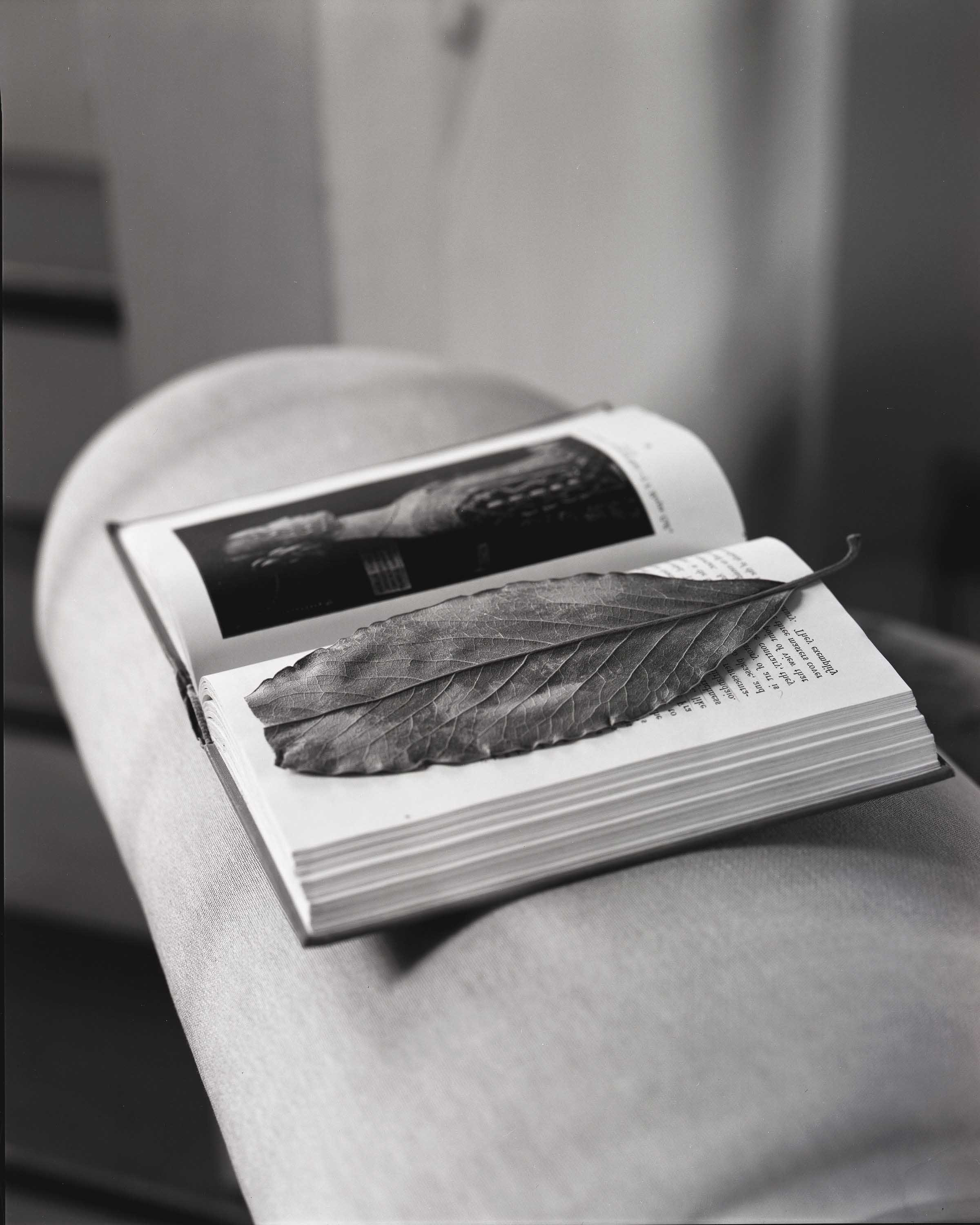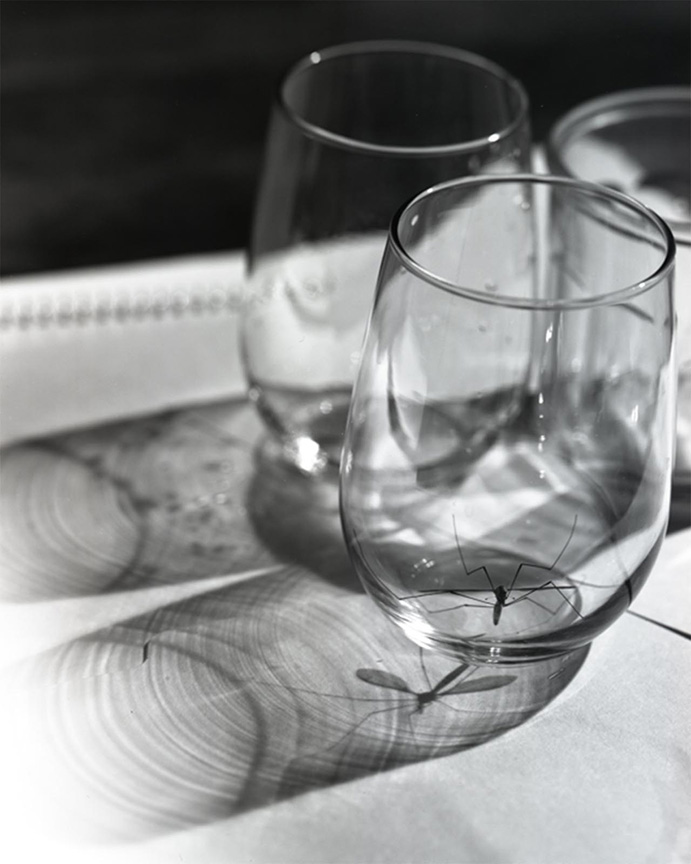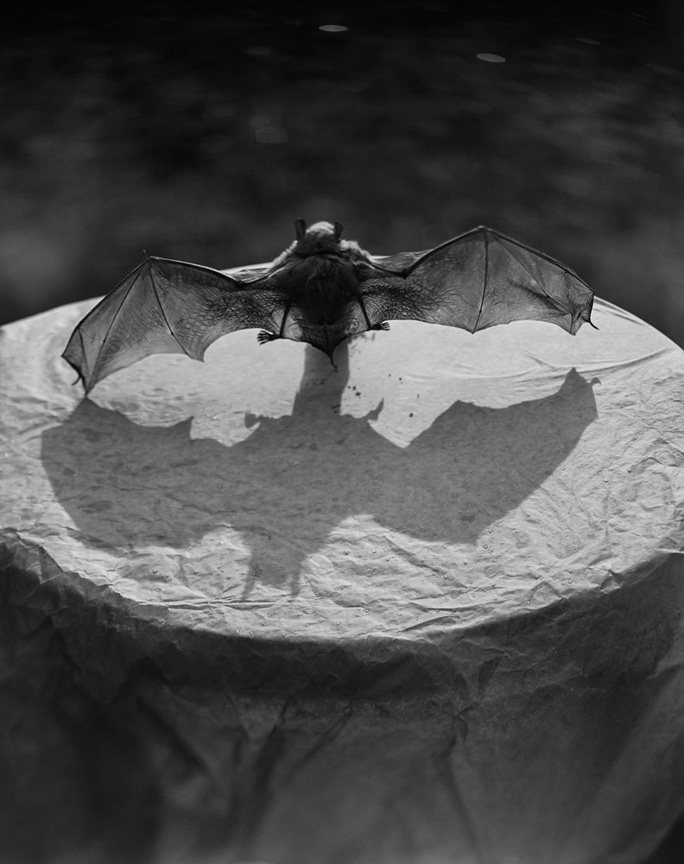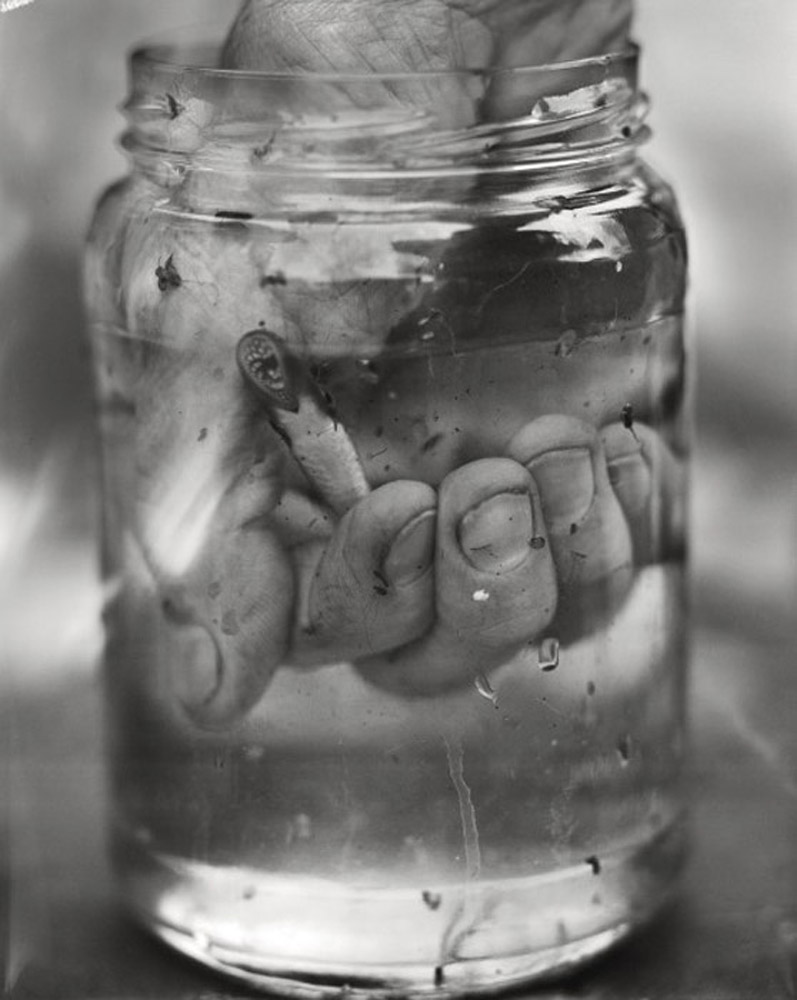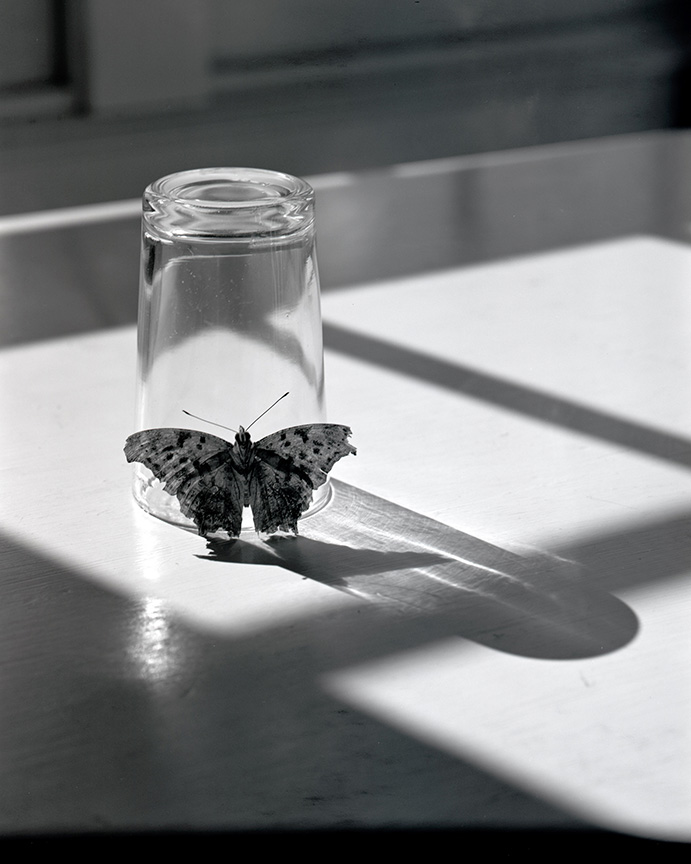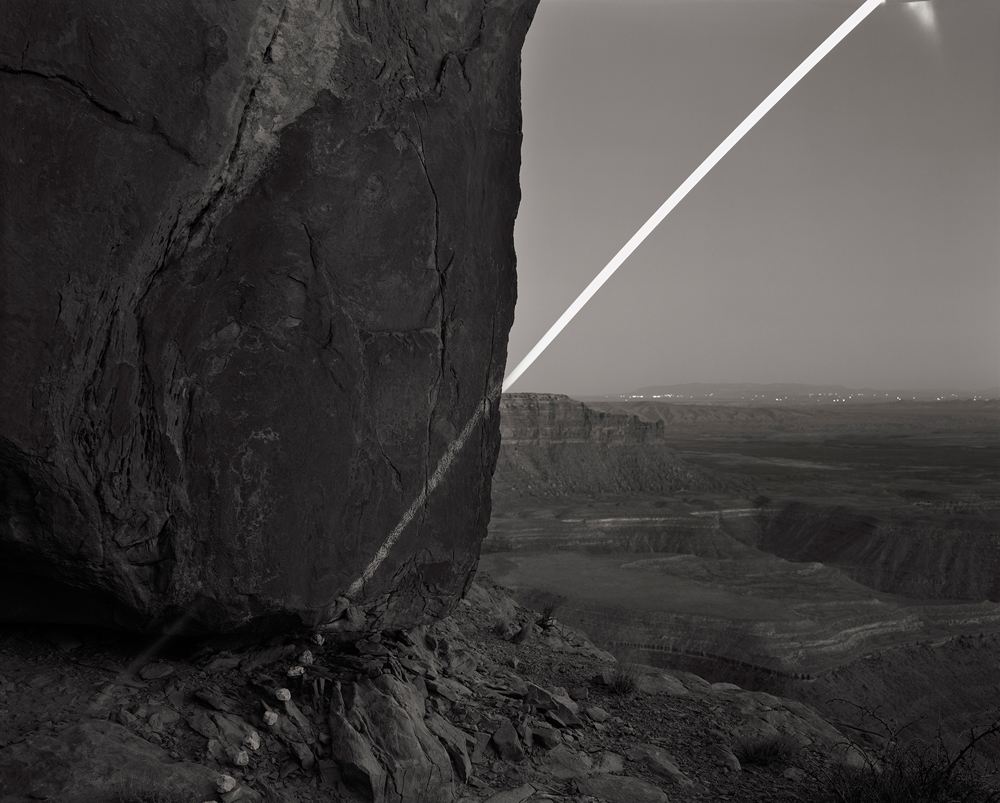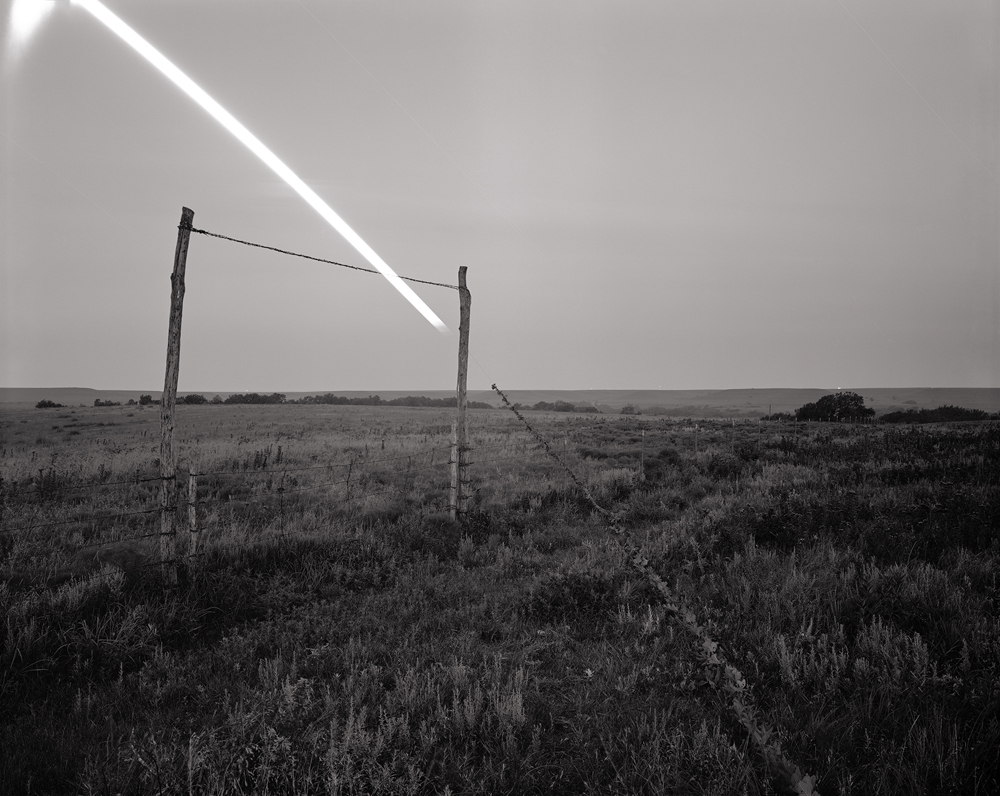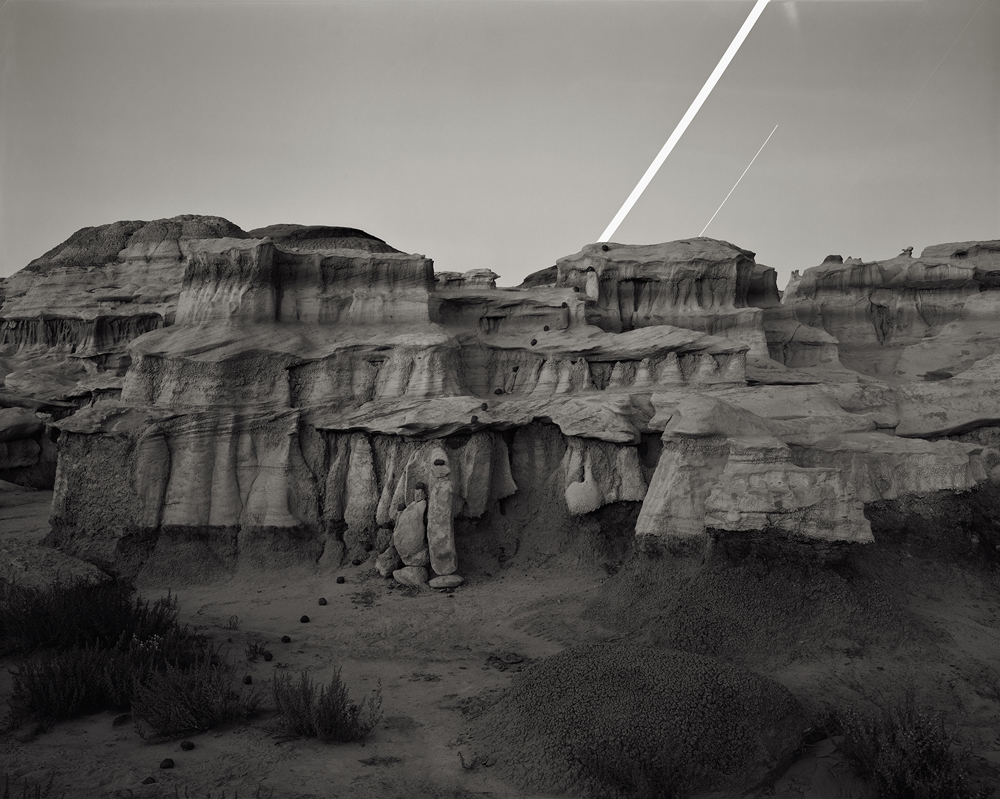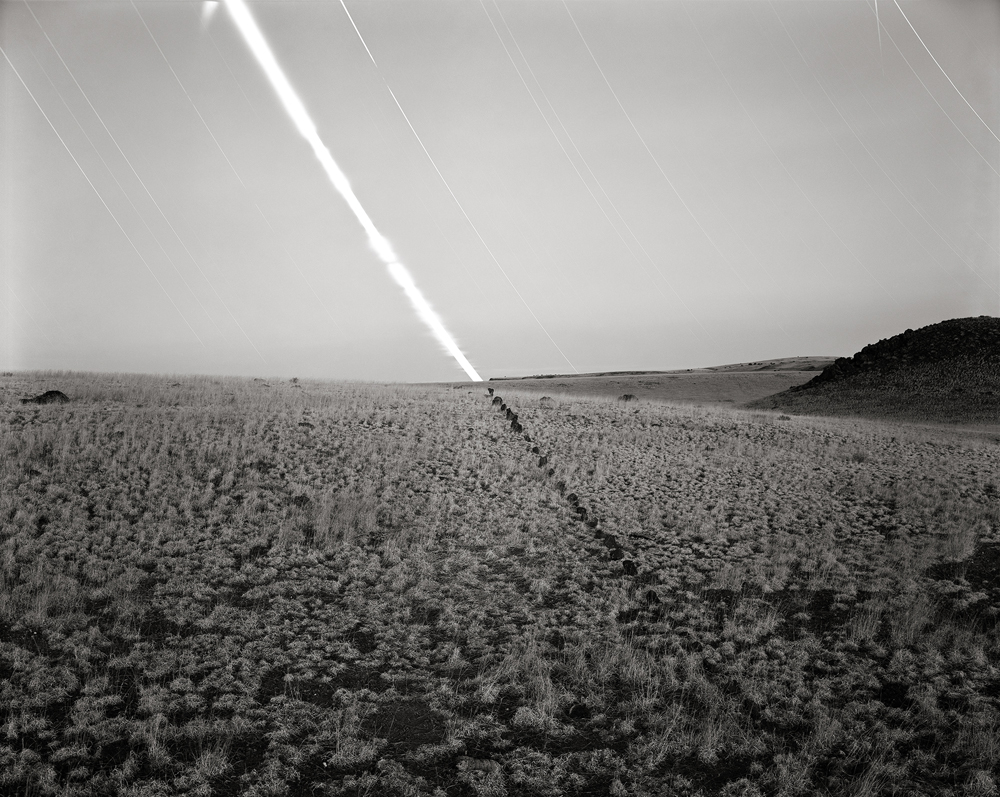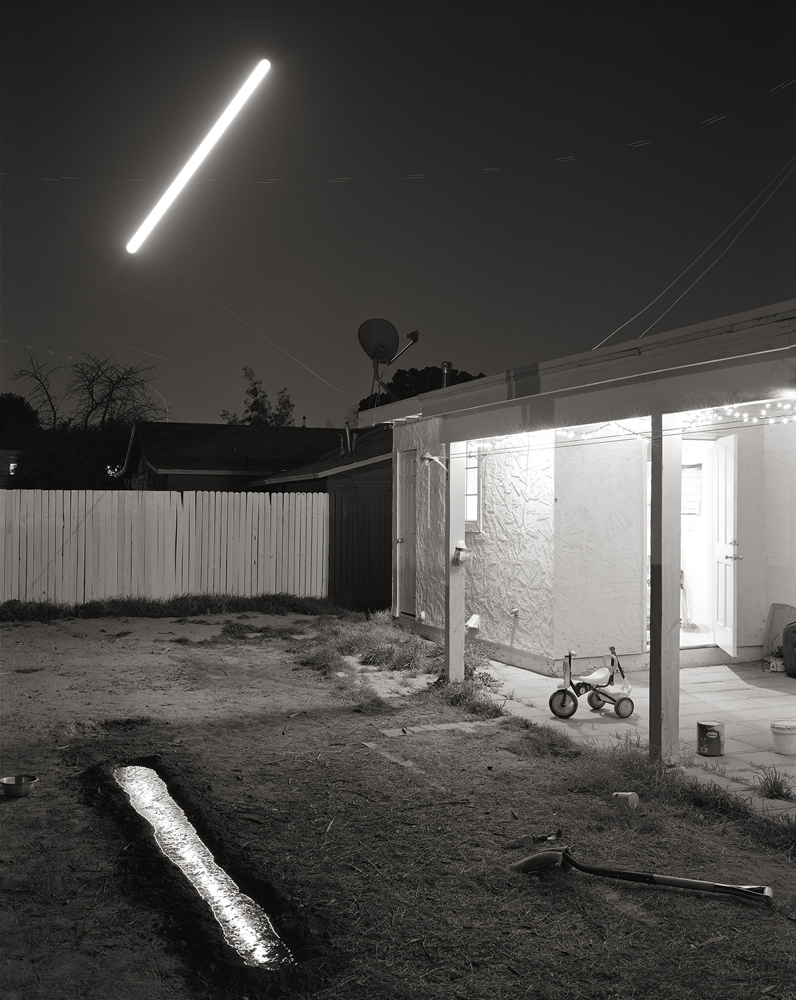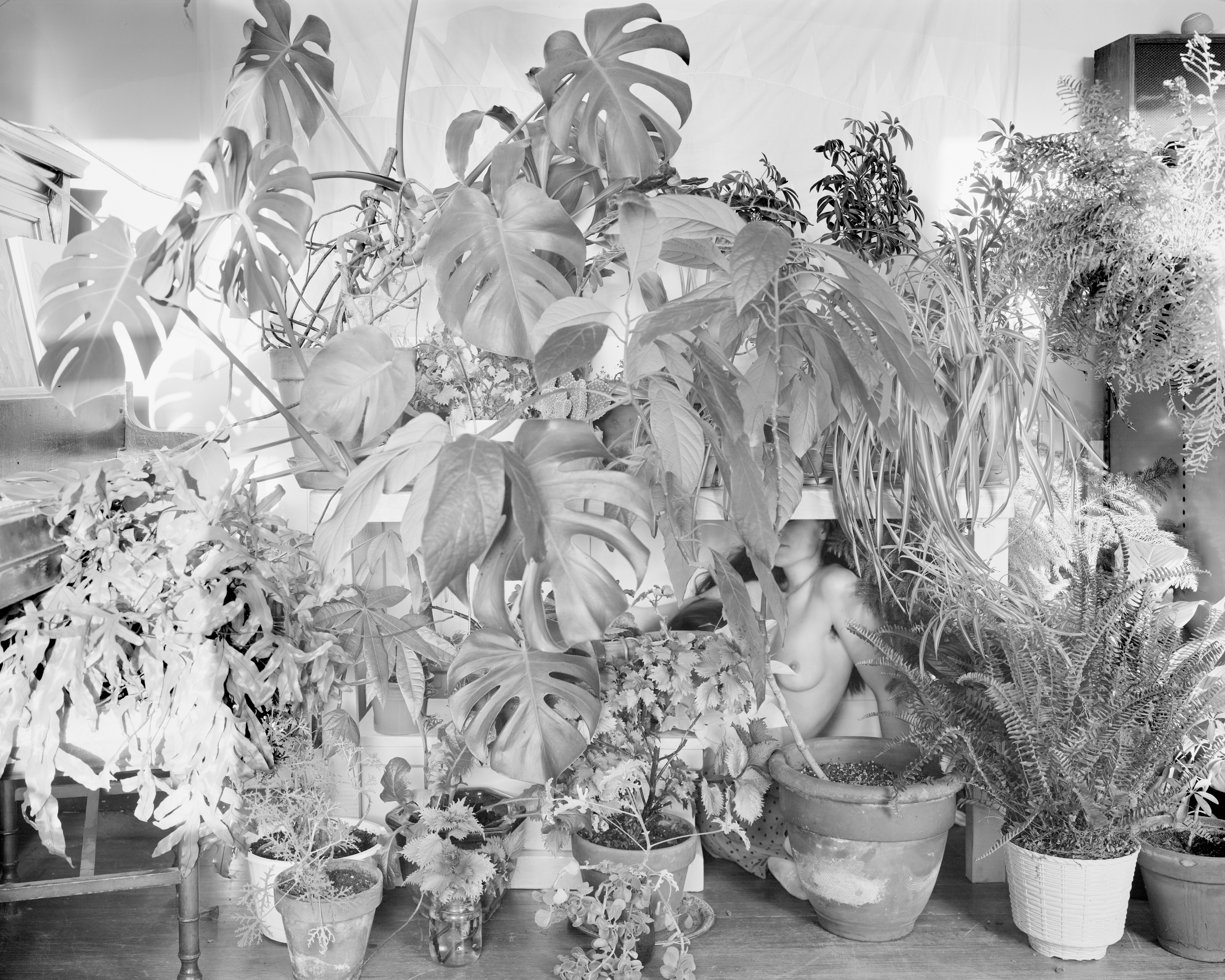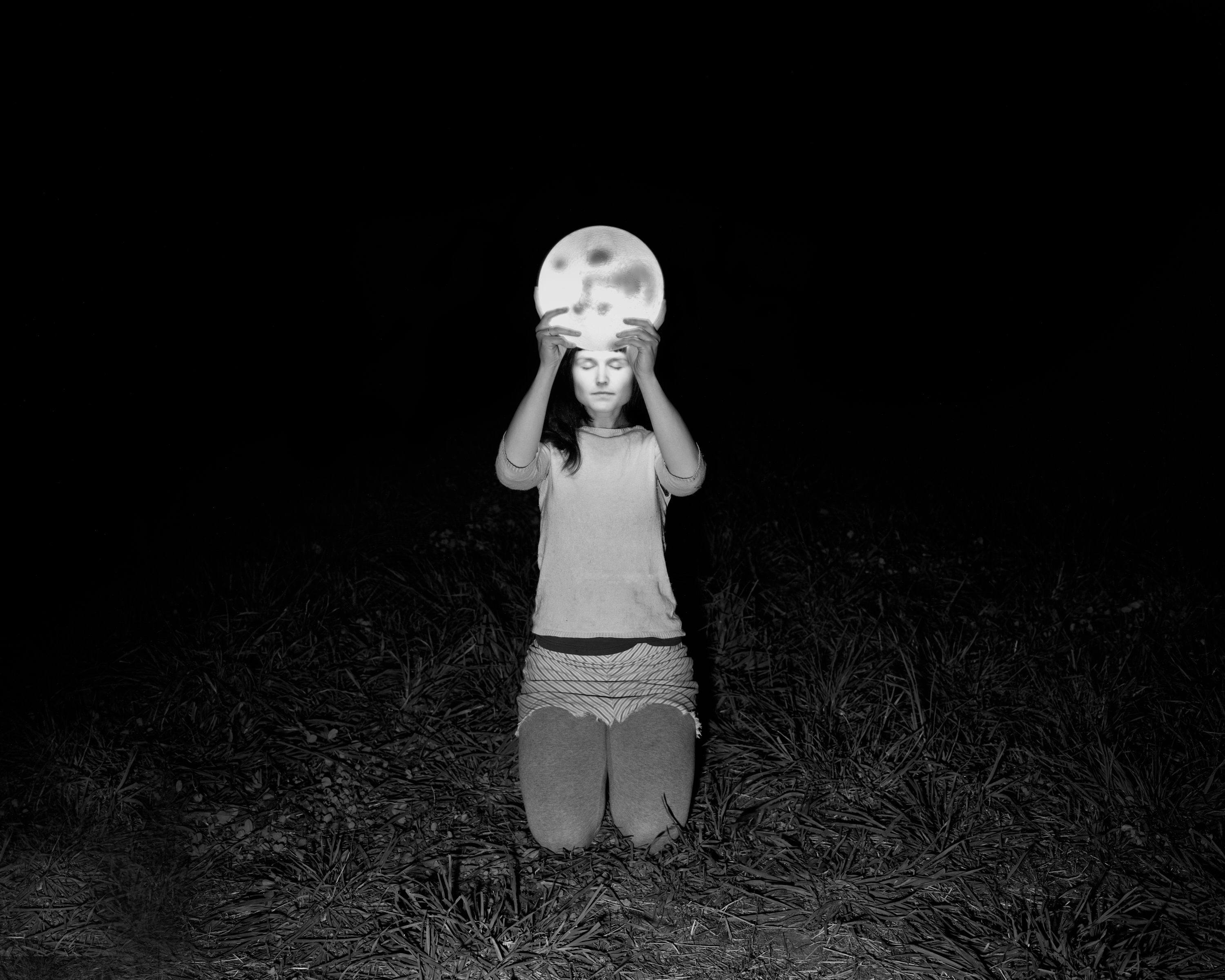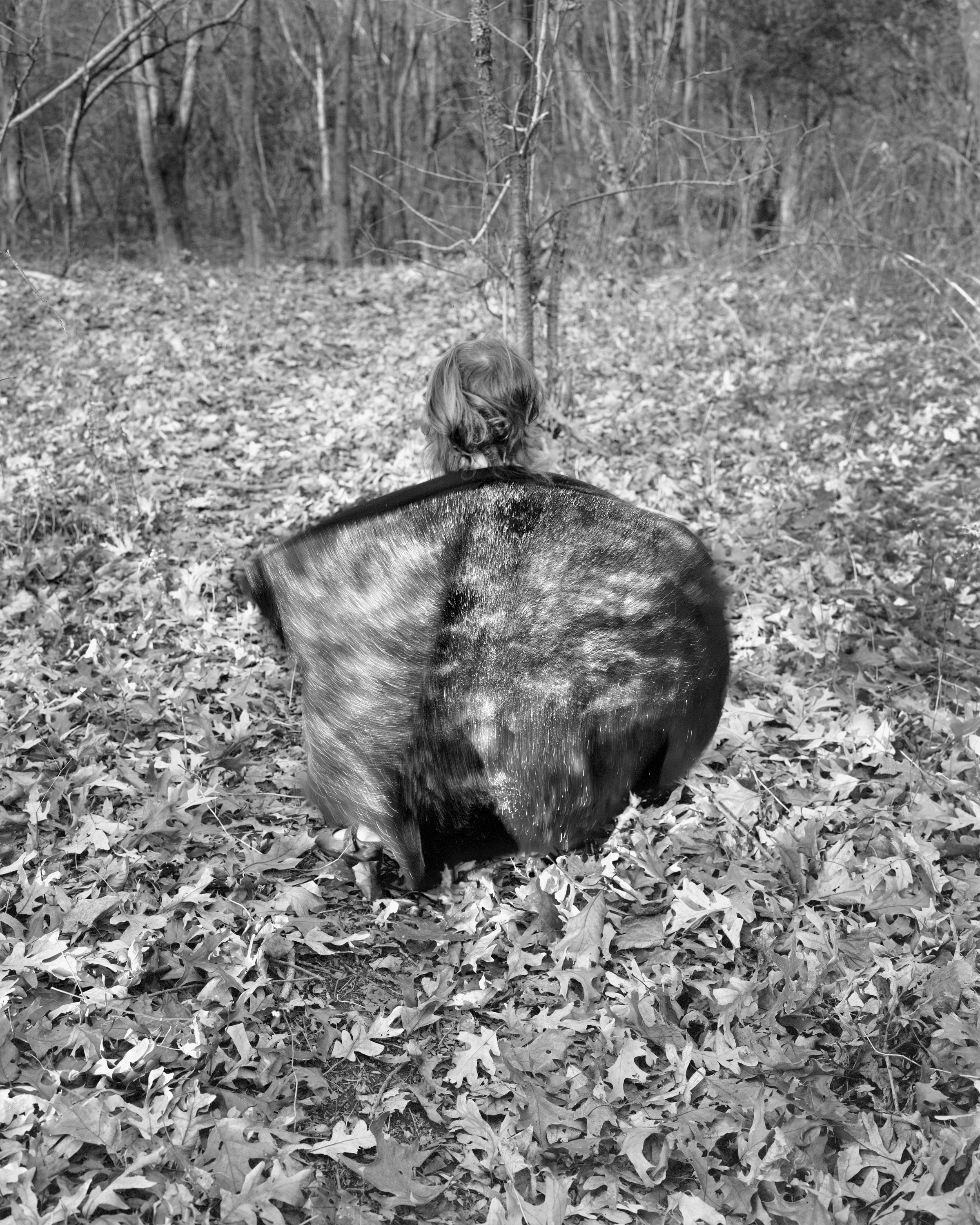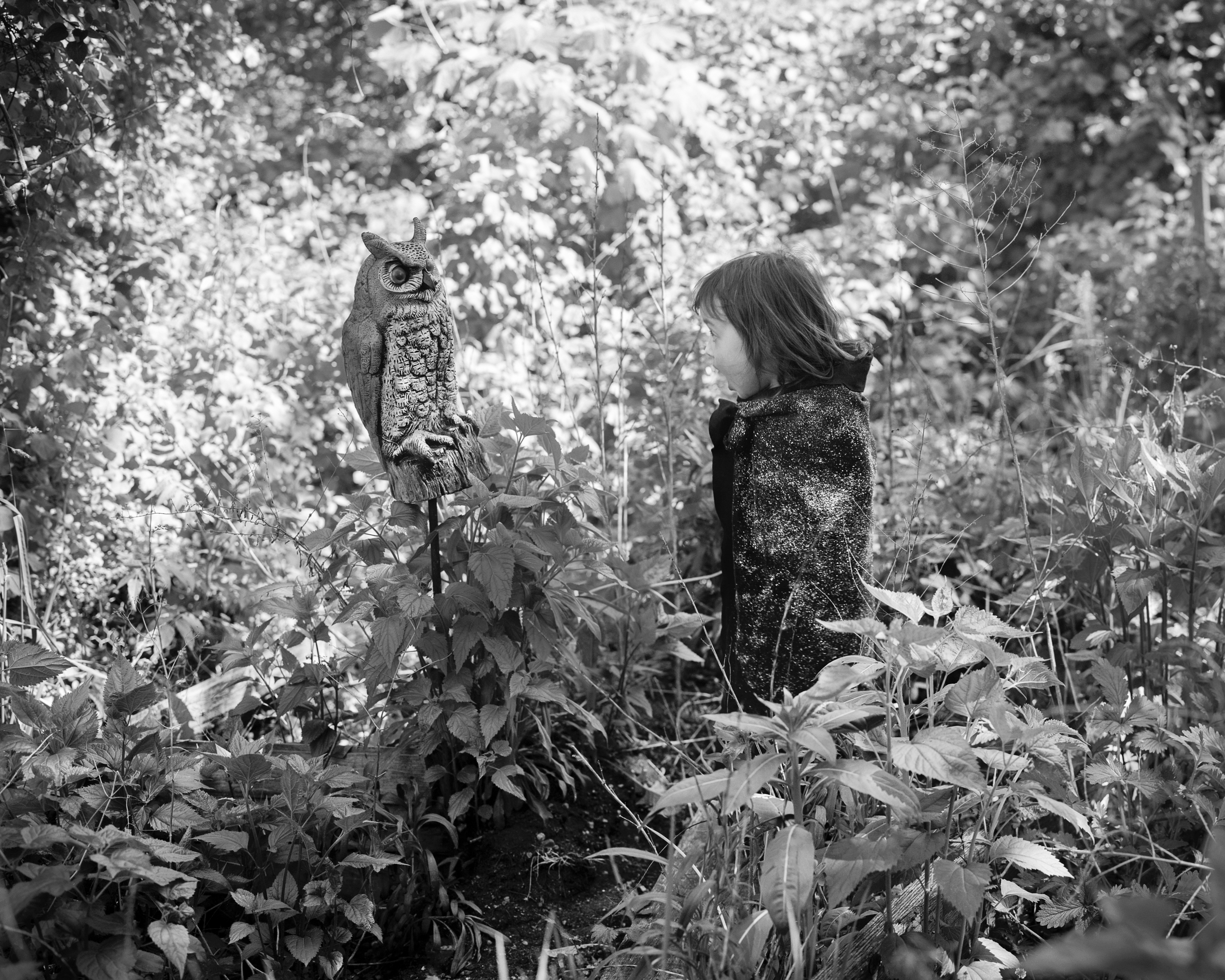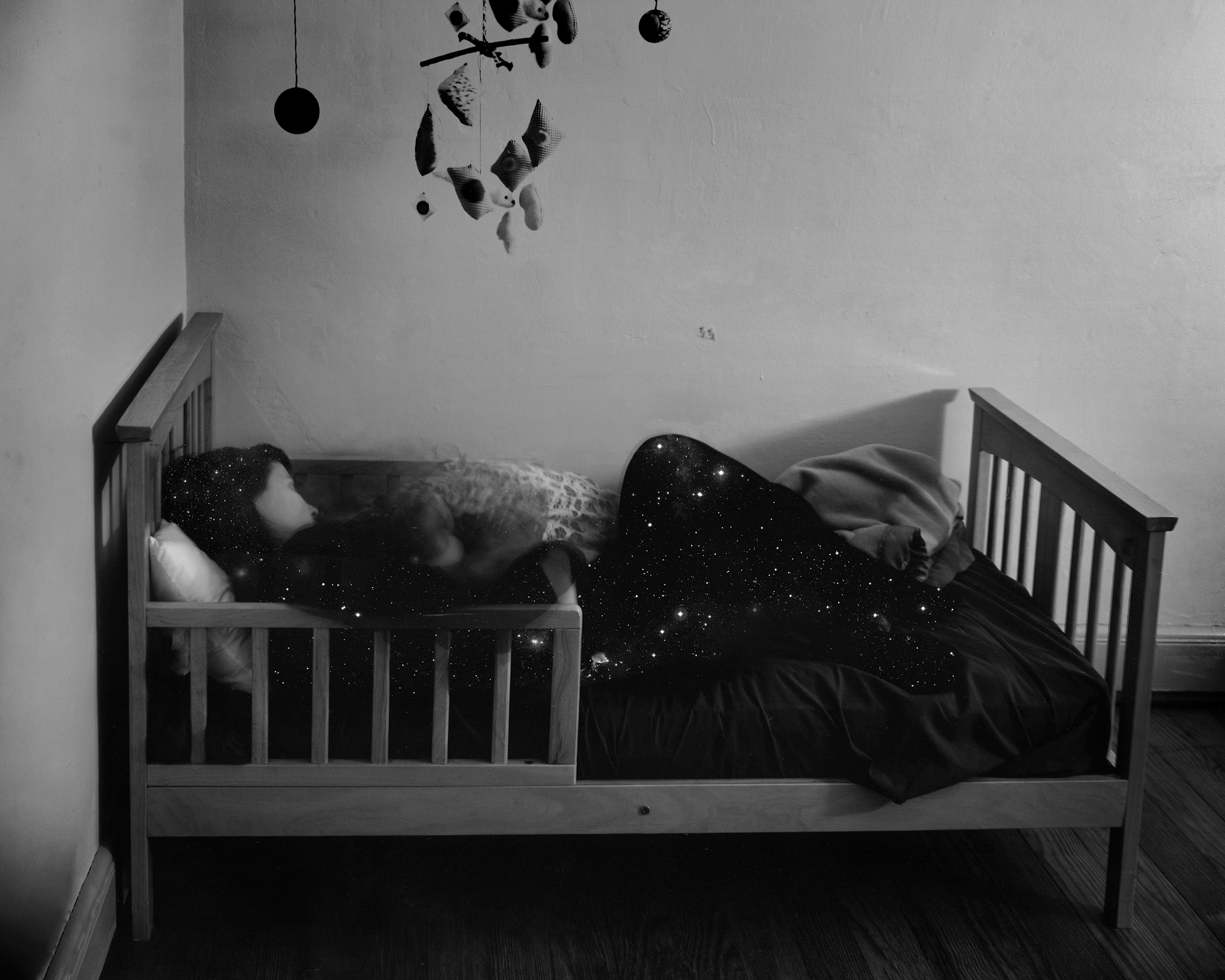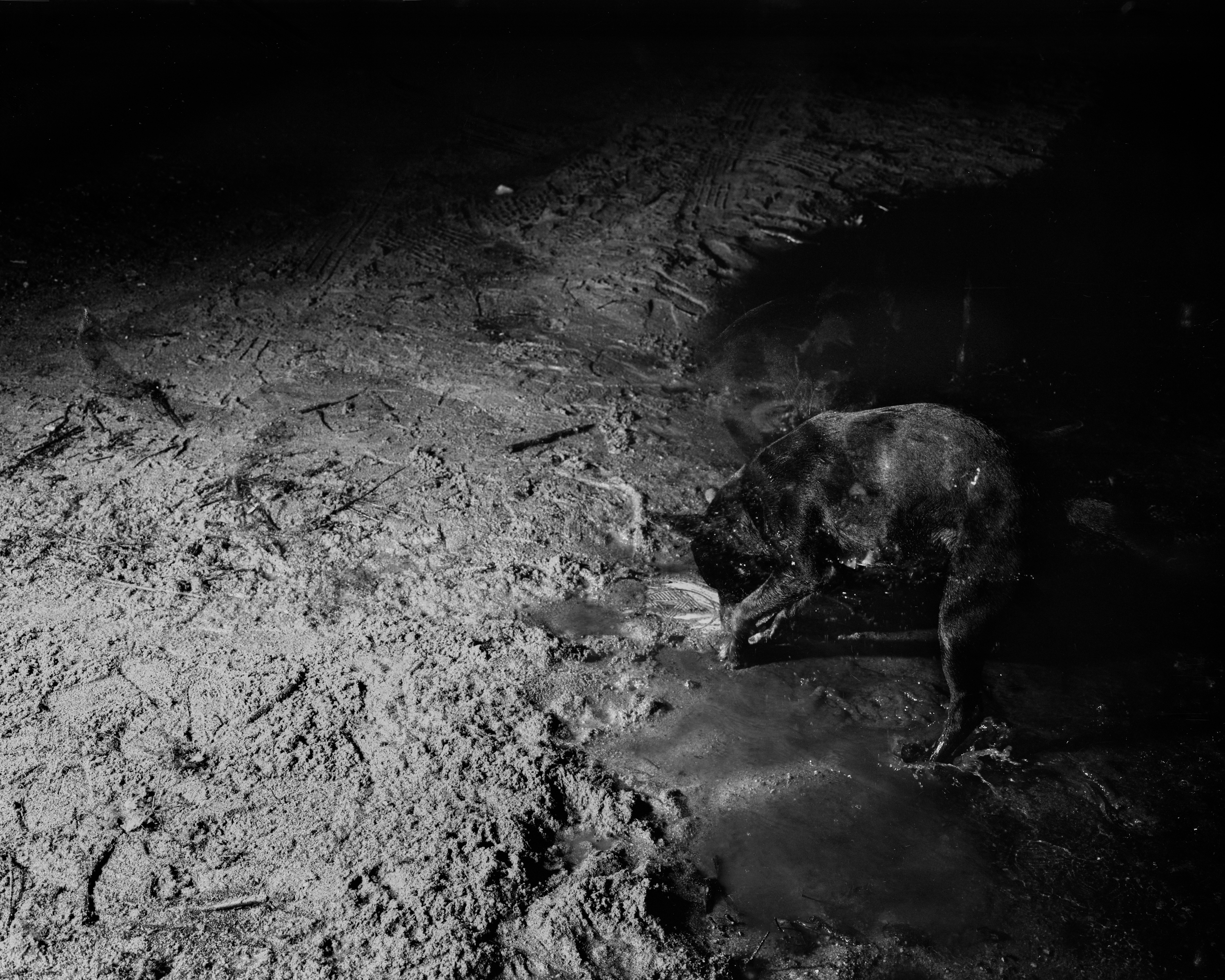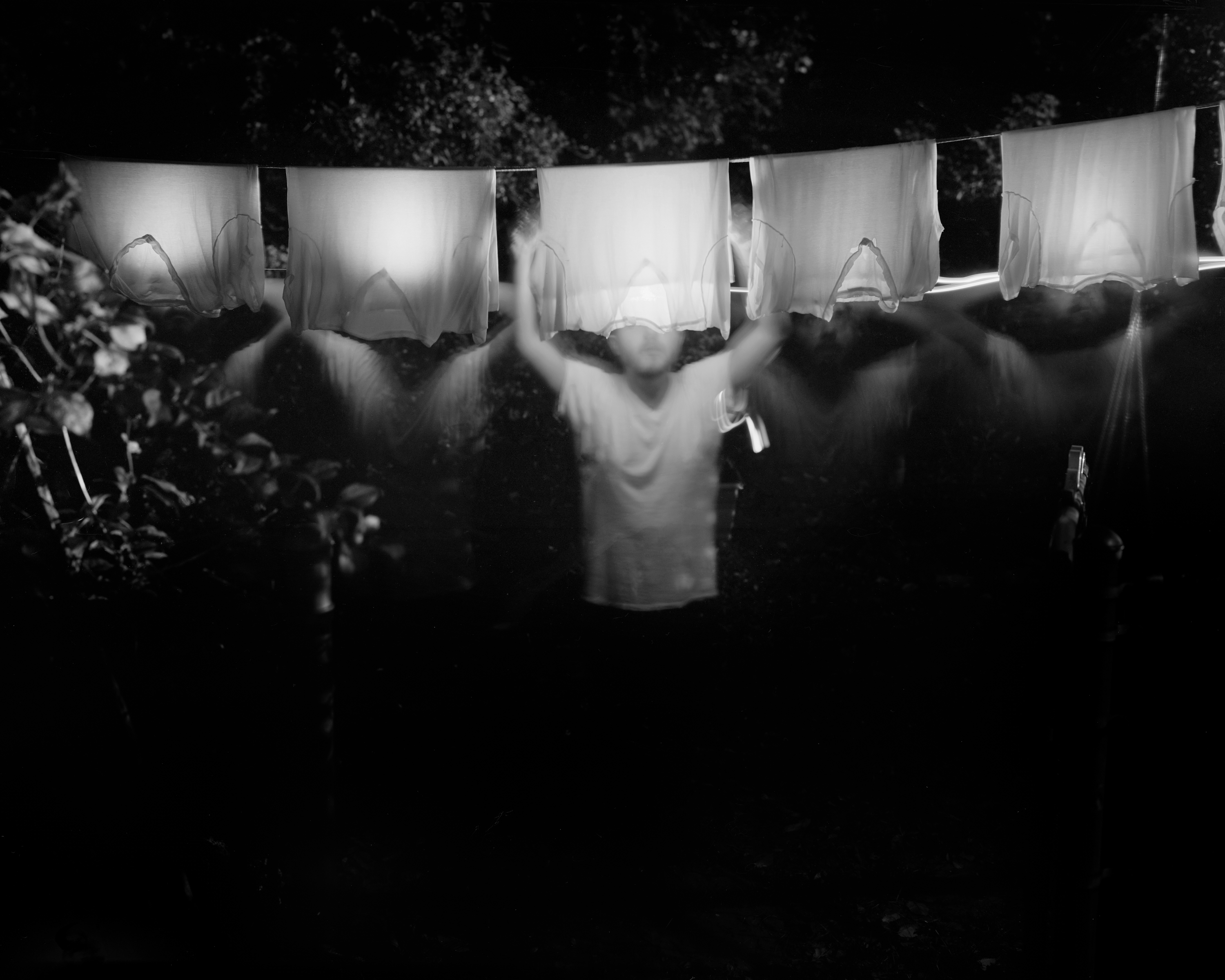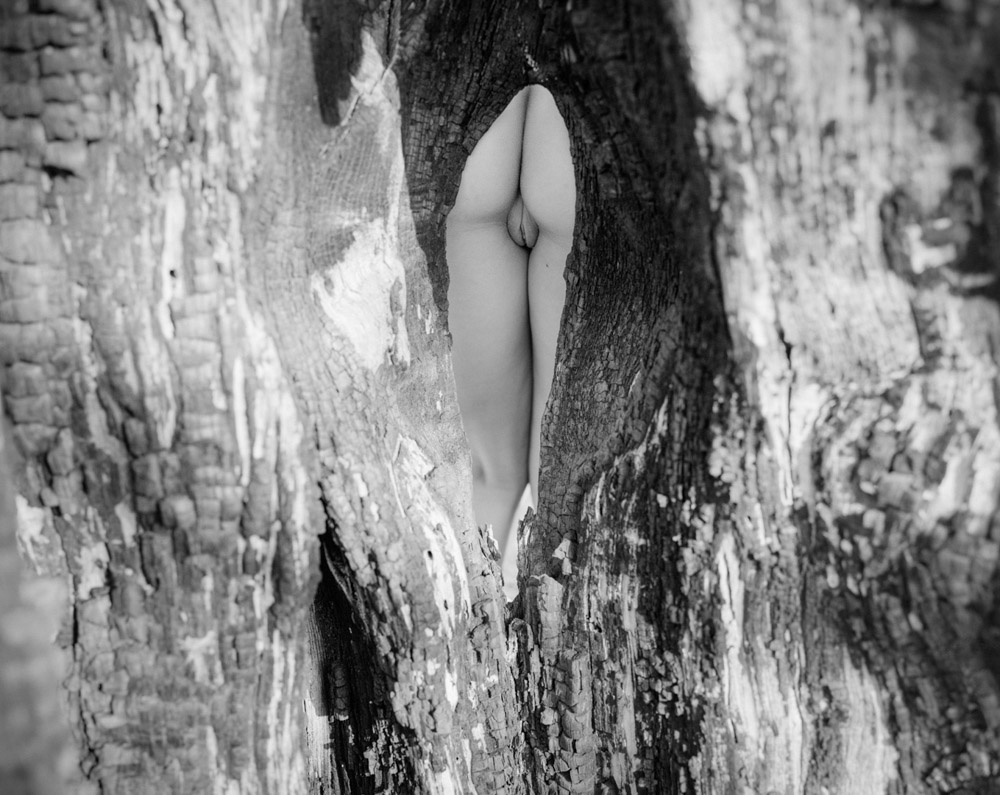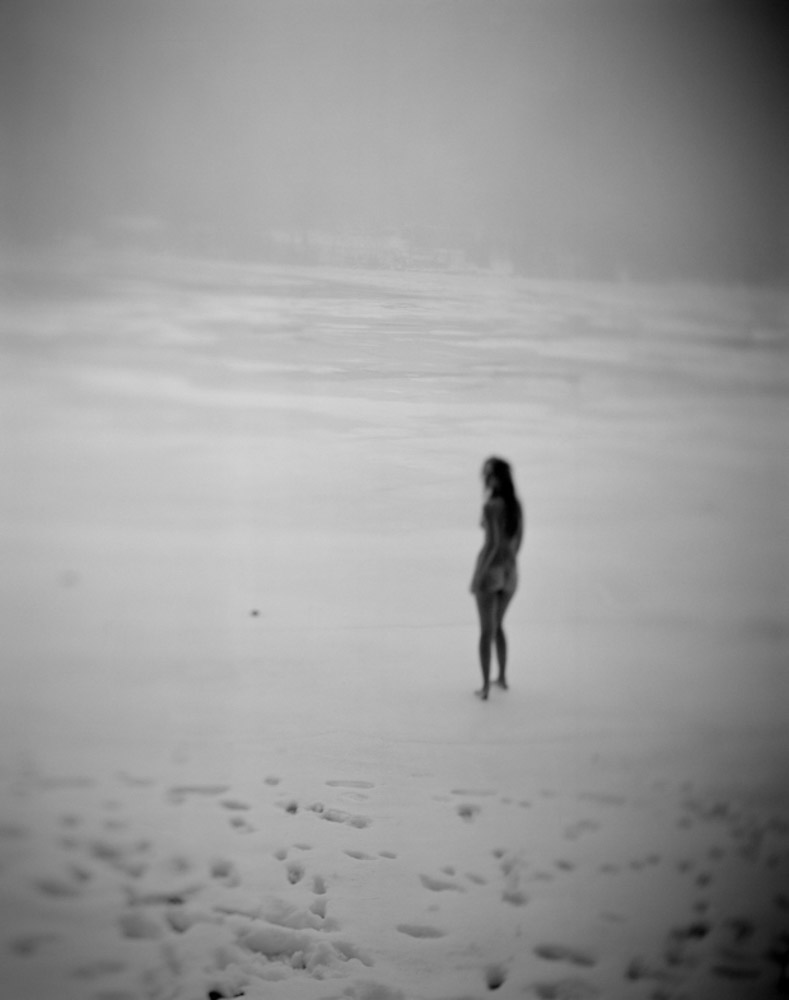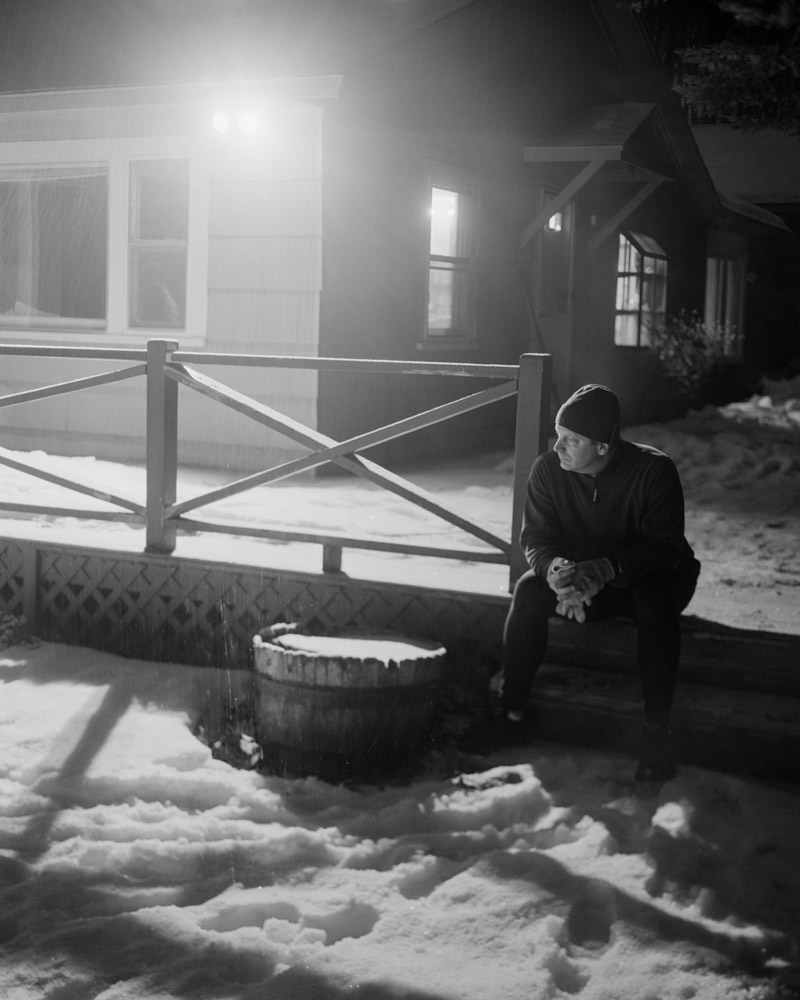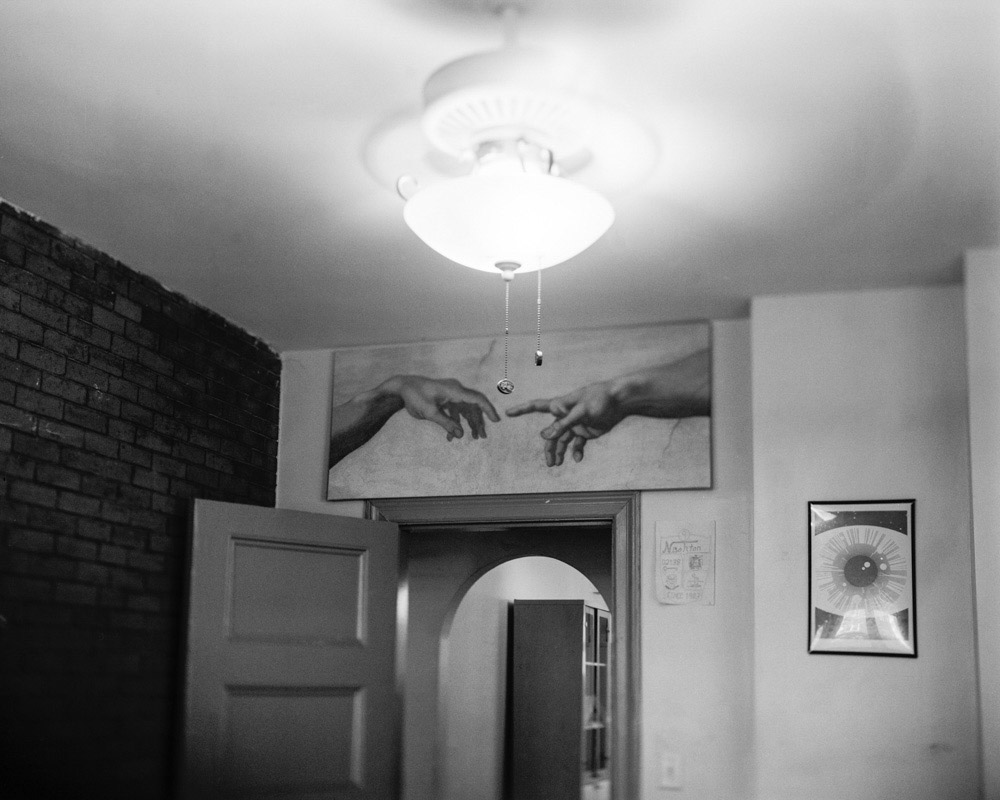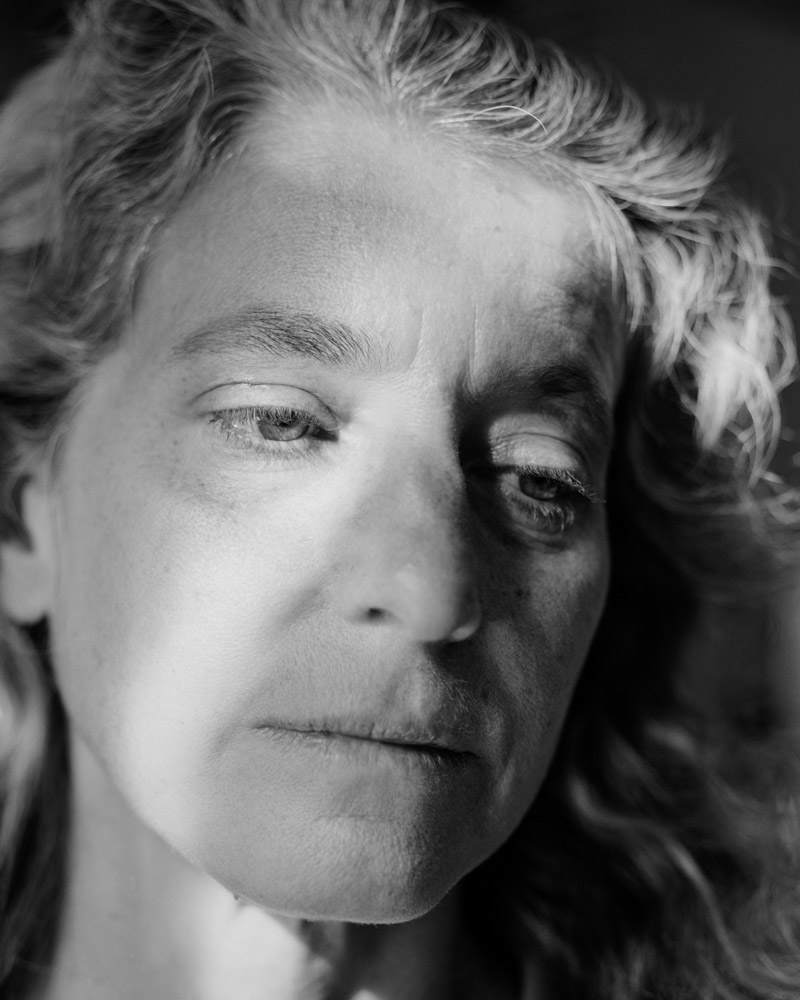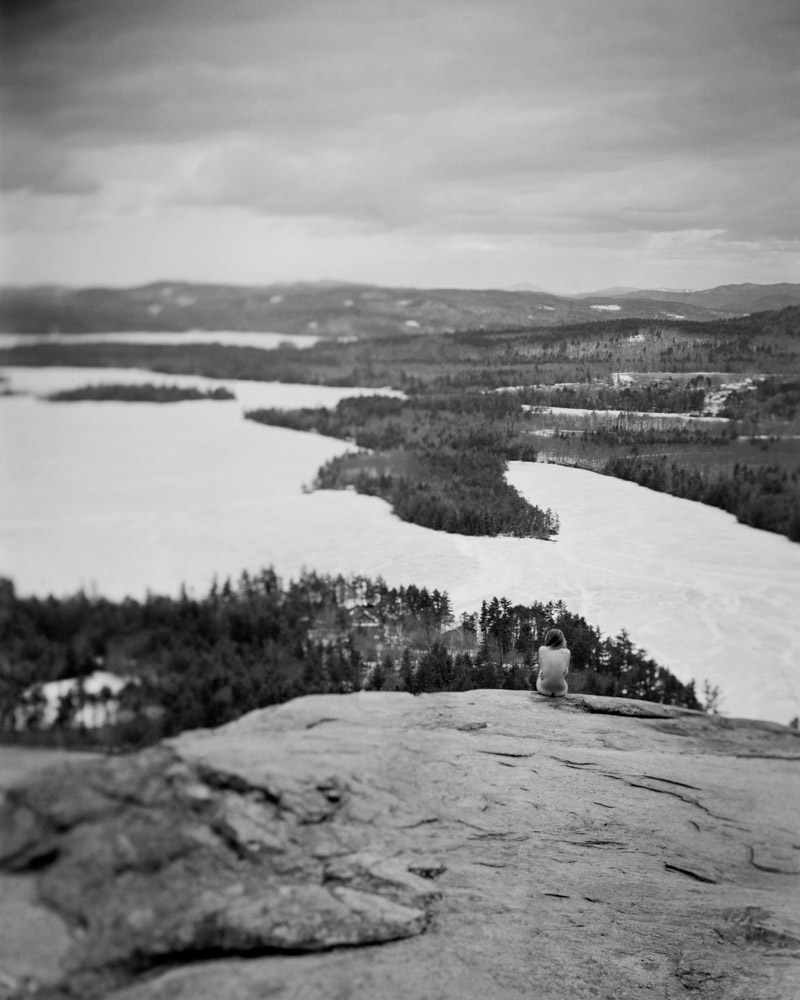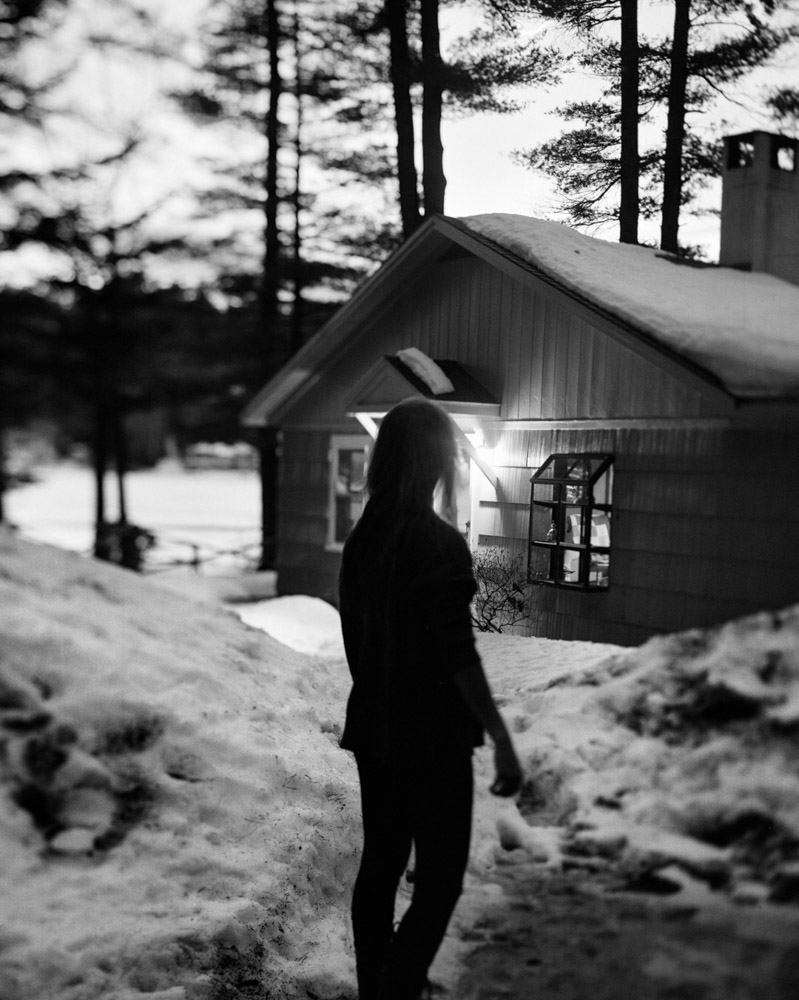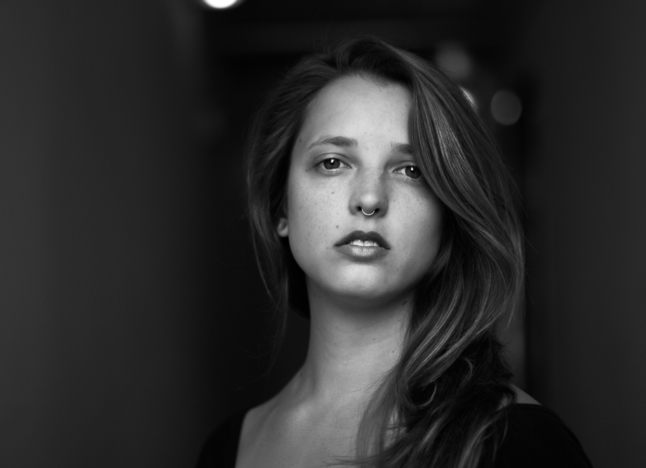Rebecca Topakian
Artist Feature
Every week an artist is featured whose single image was published by Der Greif. The Feature shows the image in the original context of the series.
Rachel Jump - Origins
Nov 01, 2017
Origins is a recollection of my personal history, where I use the camera to recreate my most potent memories experienced with my family. They reflect a present interpretation of preceding events— a fiction conjured from my truth. My photographs submit to the malleable nature of memory, and describe how personal relationships are impacted by suppressed familial tragedies. Instead of idealizing and concealing my family history, I attempt to highlight the disparity and emotional distance we previously endured. The resulting narrative marks an attempt to demonstrate my longing for familial intimacy and reconciliation. This is a collaboration amongst loved ones: a willingness to emspathize with one another, share our personal experiences, renegotiate interpersonal strife, and outwardly demonstrate our underlying affection for one another
Artist Blog
The blog of Der Greif is written entirely by the artists who have been invited to doing an Artist-Feature. Every week, we have a different author.
Published in:
»Guest-Room Images Vevey«
»Der Greif #10«
Why Black and White: Claire A. Warden
Nov 09, 2017 - Rachel Jump
We conclude our investigation into the creative practices of black and white photographers with Claire A. Warden. Her abstract imagery connects personal topics surrounding identity and race to biology and topography.
~~~
Claire A. Warden (b. Montreal, Quebec) is an artist working in Phoenix, Arizona. She received her BFA in Photography and BA in Art History from Arizona State University. Claire’s work has been exhibited widely in the United States and abroad. She has been named LensCulture’s Top 50 Emerging Talents, Photo Boite’s 30 Under 30 Women Photographers, and a Critical Mass finalist. In 2017, she received an Artist Research and Development Grant from the Arizona Commission on the Arts and the Ed Friedman Award from the Griffin Museum of Photography. Her work has been featured in various publications, including Real Simple magazine, The HAND Magazine, Common Ground Journal, Prism Magazine, and Diffusion Magazine. Claire was awarded artist residencies through the Alfred and Trafford Klots International Program for Artists in France, Art Intersection in 2015, the Center for Photography at Woodstock in 2016 and a forthcoming residency at LATITUDE in Chicago.
Artist Statement:
Mimesis is grounded in issues of identity, the other and the psychology of knowledge and power. The creation of this series comes at a time when the struggle to accept the unfamiliar is pervasive in our culture. When looking at these images, the urge to ask “what is it?” echoes the question, “what are you?” a question that has been directed towards me countless times as a person of multiethnic heritage and one that I find increasingly difficult to answer. Raised in a family with a diverse ethnic background has led me to reflect on the fluid, abstract nature of identity, which informs my use of photography.
I use saliva and mark-making as part of my photographic process, which steers the work away from the signifying functions inherent to the medium of photography. I use these interventions as symbolic acts to expose the biologic and socio-cultural forces that stimulate the emergence of an identity. This process produces a series of images that reveal certain truths in my experiences surrounding identity and simultaneously the inadequacies of language to describe oneself. Resembling systems of the natural sciences—microscopic, topographic and celestial—the photographs allegorize the complexity of systems that make up an individual and the perception of self.
Why Black and White:
I have always been drawn to black and white or monochromatic photographic processes and honestly, I have never really questioned it. Even before I studied photography, it was always pen and ink or black and white paint. For the Mimesis series, it really delights me to have discovered a process that produces images so starkly black and white while I address issues that are so far from being just “black and white”.
~~~
To see more of Claire’s work, please visit her website.
Why Black and White: Allison Barnes
Nov 08, 2017 - Rachel Jump
For our next feature on black and white photography, we look at the work of Allison Barns. Her poetic, large-format images draw inspiration from historical literature and diaristic meditations.
~~~
Allison Barnes (b. 1987) is a Chicago based large-format photographer, darkroom printer, and author. Her images and essays often focus on themes of intimacy, exploring the relationship between space and memory and those impressions within the history of the landscape. Exhibiting both 8×10 contact prints and mural landscapes, Barnes displays her work in solo and group shows internationally. Her first book, “Neither For Me Honey Nor the Honey Bee”, was published in 2014. Barnes most recently completed a residency in Fall 2017 at Milkwood in Prague to carry out research for her upcoming book. In addition, she is the owner of Great Northern Labs, an analog printing and publishing platform, focusing on limited edition books and images.
Artist Statement
Recently, my research has developed into a combination of photography and text, calling attention to varying methods of the personal archive. Over the past two years, I have been working on an intimate examination of W.G. Sebald’s, Austerlitz. These are a selection of images made as I retrace the steps of Jacque Austerlitz, navigating place and history as something that lives both far beyond and within the objects mentioned or the sites traversed.
Why Black and White?
I see images in black and white as clearly as I recall my memories, and as acutely as I experienced them. Analog black and white captures a temperature that I exist in and preserves the vernacular of space and time as I know it. I can read these images like one reads changes in the weather; a shift in energy. It’s a language that is so intuitive and creates an index that I know how to decipher. I identify with being a darkroom printer, a creator of physical objects and the tangible image, and to me, the medium of analog prints are the most tangible. Black and white glistens like the light and silver from which they are made. I don’t need color when I have silver and all of its cosmic implications.
~~~
To see more of Allison’s work, please visit her website.
Why Black and White: Cheryle St. Onge
Nov 07, 2017 - Rachel Jump
Today, we immerse ourselves in the black and white work of Cheryle St. Onge. In her series, Natural Findings, the artist examines the visceral quality of natural entities with an 8×10 view camera.
~~~
Cheryle St. Onge grew up in coastal New England, the daughter of a painter and physics professor. Her proximity to the ocean and riding horses as a child shaped her curiosity of nature. She received her M.F.A. from MassArt and has been on the photography faculty of Clark University, Maine College of Art and Univ. of New Hampshire. St. Onge is the recipient of a Polaroid Artist Support Grant, Guggenheim Fellowship, Critical Mass Exhibition Award, New Hampshire Charitable Arts Grant. Her work is widely collected, privately and publicly more notably, the Polaroid Corp, the Univ. of New Mexico Art Museum, the Portland Art Museum, and the Guggenheim Foundation.
Artist Statement:
My current body of work, Natural Findings, began with the idea, that our early foray into the natural world is not only innate, it is familial. When an older sibling offers up a jar of glowing fireflies, or a grandmother puts a Winter Berry on your tongue, we are in a colloquial, familiar manner opening the door to the larger world outside.
The photographs from Natural Findings explore the curiosity and awe of our early grasp of nature; a paper wasp nest that appears dropped from Mars, the frog egg masse that on close inspect, possible through a photograph, becomes a gelatinous scoop of stars, a constellation of black dots, soon to be tadpoles. My pictures delve into that personal moment when our fascination, at what has been collected and contained in that jar, box, or bag is visualized on film. The photographs become both the shared means of a longer examination and the conduit of our own private recollection of nature.The collections and process are in the realm of both science and curiosity. These moments of photographs are made slowly and carefully with an 8×10 view camera.
Why Black and White?
I think black and white both simplifies and magnifies everything and I love that.
~~~
To see more photographic series by Cheryle, please visit her website.
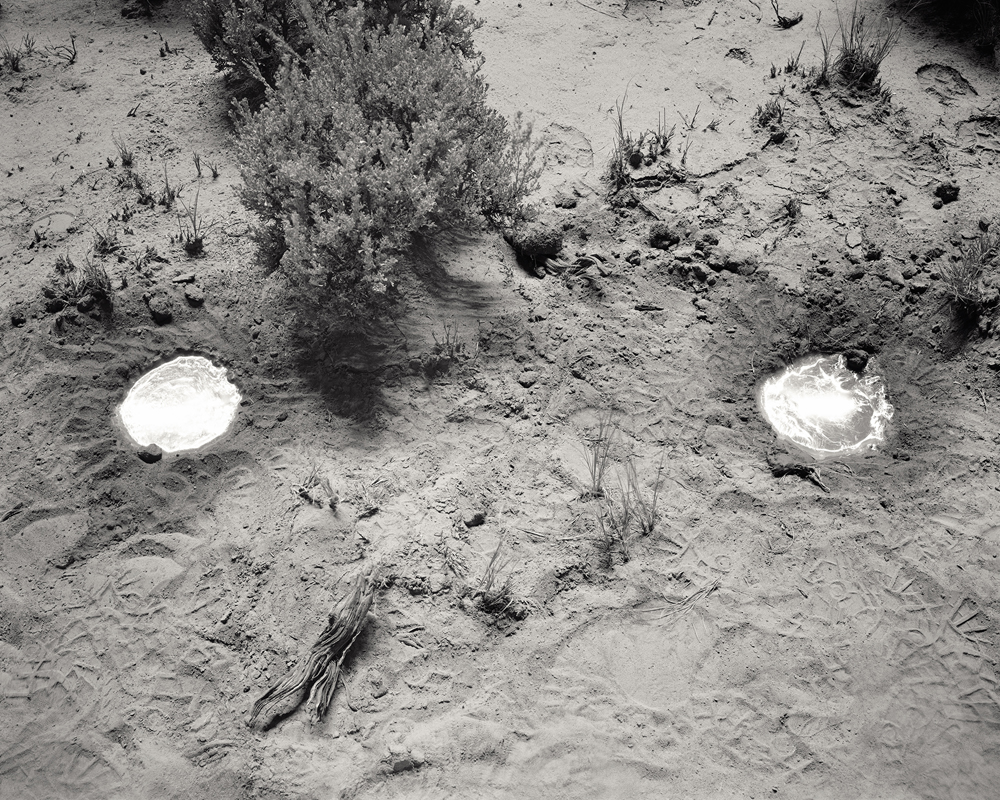
2/10 Reflection of the Transit of the Sun in Two Man-Made Pools, De-Na-Zin Wilderness36.314894 N, 108.003906 W, 9-12-2015, 12:08-2:08pm
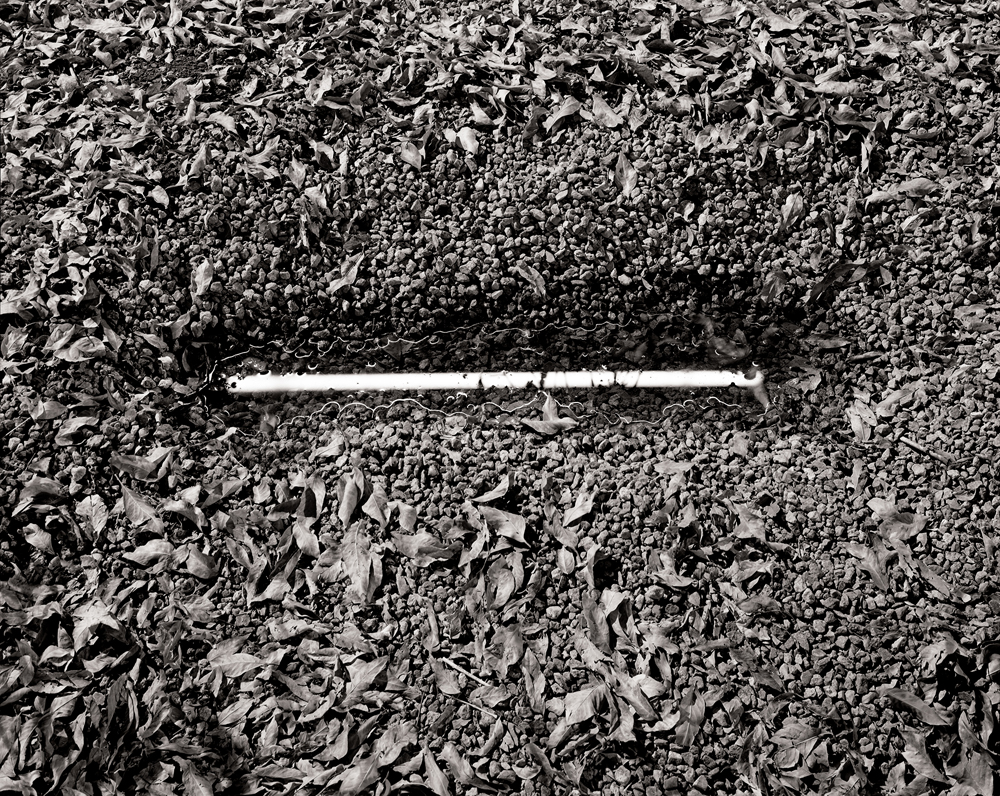
5/10 Reflection #2 (Transit of the Moon), Mesa, Arizona33.417311 N, 111.843569 W, 12/4/2012, 3:44-5:44am
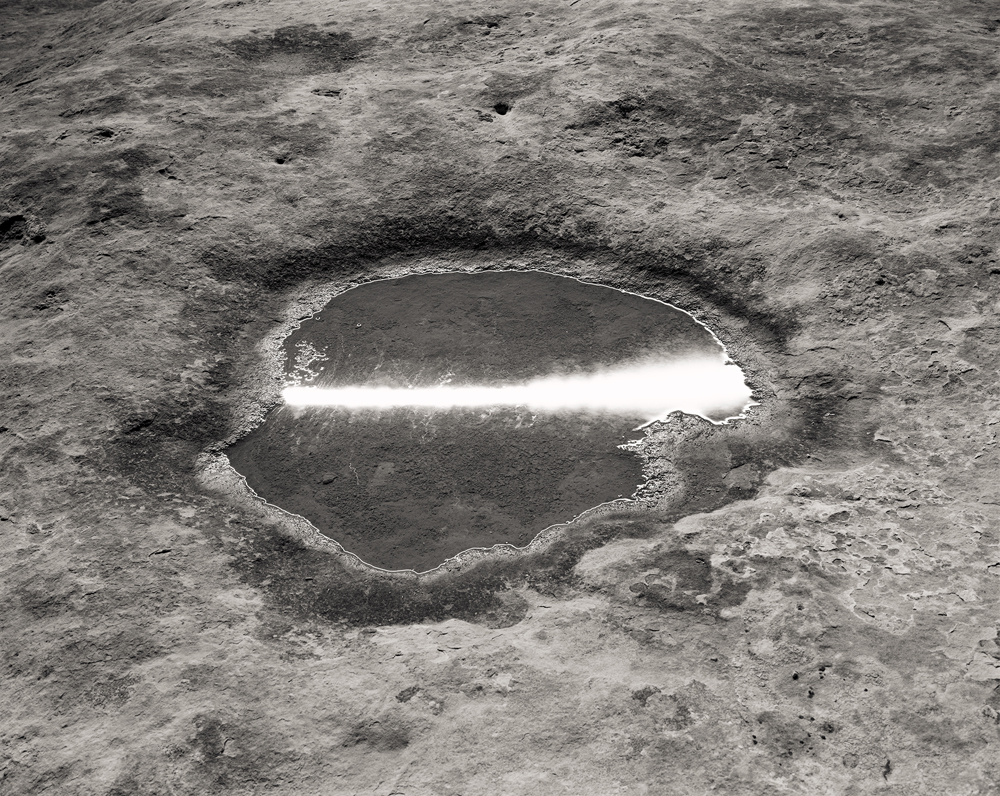
7/10 Reflection of the Transit of the Sun, Canyonlands, Utah38.192759 N, 109.668653 W, 9-10-2015, 11:02am-1:02pm
Why Black and White: David Shannon-Lier
Nov 06, 2017 - Rachel Jump
David’s meticulous practice delves into notions of the self in relation to time and celestial forces. Learn more about his photographs in the context of black and white photography below:
~~~
David Shannon-Lier is a photography based artist and educator. Originally from Massachusetts, he attended the School of the Museum of Fine Arts and Tufts University. He received his MFA from Arizona State University.
David’s work has been exhibited at institutions such as the Museum of Fine Arts, Boston, The Addison Gallery of American Art, the Phoenix Art Museum and more. He has been in shows across the United States as well as abroad, including Seoul, Korea, Vancouver, Canada; Arles, France.
David now lives in Livingston, Montana with his wife, son and their dog. He is an Assistant Teaching Professor at Montana State University in Bozeman.
Artist Statement:
These photographs come from Of Heaven and Earth, a series of long exposure photographs of altered landscapes. Altered elements in the landscape interact with movements of heavenly bodies in the pictures.
The work stems from gap between the knowledge of the vastness of time and space and the unshakable notion that the tiny acts we engage in each day matter. It comes from our notions of belonging to the land and the land belonging to us, from the allure of the single point perspective photography gives us. It is about the importance of a few hours in a very specific place, alongside the importance of the eternal and unending scale of time and space itself. It’s about mortality.
Why Black and White?
Mostly, I just enjoy the silver gelatin process. I like working at an enlarger more than I like sitting at a computer. I like working with an 8×10 camera more than any digital camera I have used. I like touching the objects I am making while I am making them.
Also, the photographs in the series Of Heaven and Earth are tediously difficult to set up and make, involving precise measurements and hours of preparation. I don’t want them to feel tedious or difficult, though. I want them to feel effortless. The simplicity of black and white and how I associate it with evidence or memory makes it the right choice for my work.
~~~
To view more of David’s photographs, please visit his website.
Why Black and White: Scott Alario
Nov 04, 2017 - Rachel Jump
We continue our showcase of contemporary black and white photographers with the work of Scott Alario. Using his partner and children as collaborators, the artist explores the surreality of childhood— transforming familiar, domestic scenery into figments of the imagination.
~~~
Scott Alario (b. 1983, New Haven) is an artist living and working in Providence, RI. His practice uses photography and is a collaboration with his wife Marguerite Keyes, and children Elska and Marco Moon. The family works together to stage, perform, and edit the images. Alario received an MFA in Photography from the Rhode Island School of Design in 2013 and a BFA from the Massachusetts College of Art in 2006. Group exhibitions include Surface to Air (curated by RJ Supa) RadiatorArts, Long Island City, NY, 2016, Love 2016 (curated by Rachel Stern), LeRoy Nieman Center for Print Studies, Columbia University, NY, 2016. His images have been discussed in Collector Daily, Time Lightbox, Vice.com, American Photograph, and The New Yorker, among other publications. Alario’s work is represented by Kristen Lorello in NY, where his third solo show, entitled, “Soft Landing”, will open in December 2017.
Artist Statement:
My art practice is photographic and includes staged depictions of my immediate family. I use multiple exposure and blurring, and other photographic tricks, to lend a charged energy to everyday scenes.
Why black and white?
A photograph is an abstraction, that is often read as concrete. I think an image in black and white more clearly establishes that a photograph is a fiction. Perhaps the viewer will allow themselves a longer look, or allow themselves to notice texture and consider the image as a construction. Technically: dealing with 255 possible grey values (in a digital file) is also a lot easier than working in full color.
~~~
To view more of Scott’s work, please visit his website. See the announcement for his upcoming solo exhibition, “Soft Landing”, opening December 13, 2017, at Kristen Lorello, here.
Why Black and White?
Nov 03, 2017 - Rachel Jump
As an artist, you are posed with questions surrounding your creative practice that are thoughtful, exhilarating, or even confounding. There is always one particular question that comes to the surface, one that continues to surprise me:
Why black and white?
For me, it has never been a question. I started taking photography classes in the mid-2000’s when art institutions were beginning to replace their color darkrooms with digital labs. Surprisingly, the high school I attended in Concord, Massachusetts only had a black and white darkroom. I shot 35mm black and white film religiously until my junior year of college, where I transitioned to large format photography.
I believe using black and white film enables me to be a more thoughtful and contemplative photographer. Film taught me how to slow down in a manner where I was no longer seeing my subject, but truly feeling the details of my subject. For my current project, I am photographing my family. There is this desire to preserve these precious moments I share with the people I love— a transformation from photographic object to personal relic.
There is a certain sense of intimacy that I feel I can achieve with black and white imagery over any other creative medium. Photographing in black and white allows my audience to focus entirely on the content of my imagery. I understand the historical implications of using black and white film, but I believe that this medium can be revisited and redefined in a contemporary context. I love color film and color photography— my favorite photographers are ones who use color— but for my practice, I believe I am able to achieve a stronger emotional impact by creating black and white images.
For my blog take-over this week, I am going showcase photographers working with black and white imagery, and ask them to respond to a single question:
Why black and white?


